Michelle Nelson-Schmidt's Blog, page 37
November 26, 2024
Boston’s Hidden Haunts: Dark Tales From America’s Oldest Streets
Boston's streets are steeped in chilling history and ghostly legends that beckon you to explore. From the Granary Burying Ground, where Paul Revere's ghost rides, to the Omni Parker House, haunted by its founder and Charles Dickens, each corner holds a dark tale. You might hear whispers of the past at Kings Chapel or encounter restless spirits over at Fort Warren. By joining a ghost tour, you'll uncover these eerie narratives as you stroll through America's oldest city. There's so much more to uncover in Boston's haunted past, just waiting for you to discover its secrets.
Key TakeawaysBoston's haunted history is deeply rooted in colonial tragedies and tales of rebellion, making it one of America's most ghostly cities.Notable haunted locations include Granary Burying Ground, Kings Chapel, and Boston Common, each associated with spectral legends.Ghostly encounters at the Omni Parker House and Fort Warren feature spirits like Harvey Parker and Melanie Lanier, enhancing the eerie atmosphere.Guided ghost tours provide immersive experiences, exploring Boston's dark history and revealing hidden haunts on a 1.5-mile journey.Visitors often report unsettling experiences, particularly at the Granary Burying Ground and Omni Parker House, adding to the city's supernatural reputation.Historical Roots of HauntingBoston's haunting history weaves through its streets and buildings, echoing the tragedies of its colonial past. As you stroll through the city, you may sense the presence of those who fought for freedom during events like the Boston Massacre. This pivotal moment in history left a residue of grief that seems to linger, haunting the very ground where it occurred.
One of the city's oldest cemeteries, the Granary Burying Ground, is a prime location for ghost tours. Here, the spirits of early settlers and victims of historical injustices are believed to roam among the gravestones. Visitors often report feeling an inexplicable chill, as if the past is reaching out to them.
Historical figures, such as Mary Dyer, executed for her beliefs, add to the spectral tapestry of Boston. Her spirit, along with others from the Revolutionary War and Civil War eras, is said to wander the streets, seeking resolution for their untimely ends.
These tales of anguish and rebellion create a fascinating narrative, making Boston one of the most haunted cities in America. So, are you ready to uncover the stories that still echo through the ages?
Famous Haunted Locations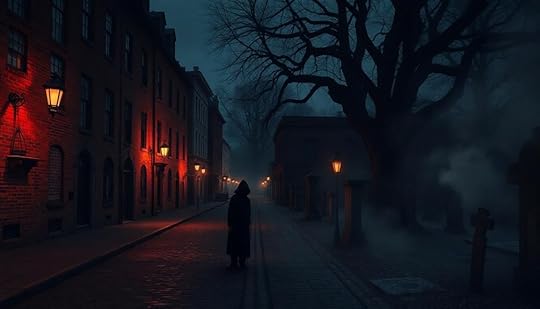
When you explore Boston's famous haunted locations, you'll uncover chilling tales rooted in history.
From the whispers of the past at Kings Chapel Burial Ground to the ghostly sightings of Paul Revere at Granary Burying Ground, each site offers its own notorious encounters.
Get ready to encounter spirits that linger in the shadows of this historic city.
Historic Cemetery LegendsExploring the historic cemeteries of Boston reveals not just the city's past but also a tapestry of legends and ghostly encounters that bring these sites to life.
The Granary Burying Ground, established in 1660, serves as the final resting place for famed figures like Samuel Adams and Paul Revere. Visitors often claim to see Revere's ghost riding on horseback, adding to the cemetery's haunted allure.
At Kings Chapel Burial Ground, founded in 1630, the spirit of Elizabeth Pain lingers, seeking redemption after her unjust execution. Her gravestone inspired Nathaniel Hawthorne's "The Scarlet Letter," and many have reported feeling her presence as they pay their respects.
The Old Granary is steeped in eerie tales, with urban legends of a nameless victim buried alive. Patrons frequently hear disembodied voices echoing through its grounds, intensifying the unsettling atmosphere.
Even outside the cemeteries, Boston Common, once a site for public hangings, is rumored to be haunted by the spirits of those executed, restless in their quest for justice.
Each location invites you to uncover its ghostly stories, enriching your journey through Boston's historic landscape.
Notorious Ghostly EncountersUnravel the chilling tales of Boston's most notorious haunted locations, where history and the supernatural intertwine. As you wander through these eerie sites, prepare for spine-tingling ghostly encounters that may leave you questioning reality.
Granary Burying Ground: Here, you might feel an unsettling chill as you spot Paul Revere's ghost riding silently on horseback, watching over his final resting place.Omni Parker House Hotel: This historic hotel holds secrets in room 1078, where guests have claimed to see the phantoms of founder Harvey Parker and even Charles Dickens, lingering in the shadows.Fort Warren: The spirit of Melanie Lanier is known to leave ghostly imprints in the snow, a haunting reminder of her tragic end during the Civil War.Don't forget the Boston Common, once a site of public hangings, where the restless spirits of the executed seek justice.
Each location offers a unique glimpse into Boston's haunted past, inviting you to explore the dark corners of its history. Are you brave enough to seek out these ghostly encounters?
Spooky Hotels and Inns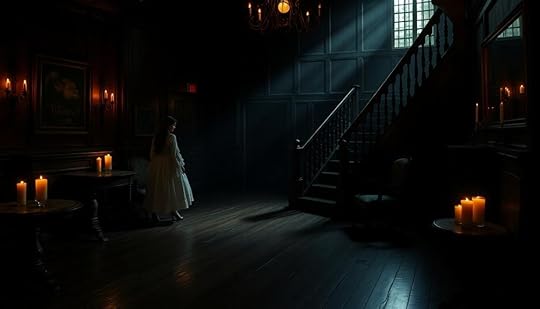
When you check into the Omni Parker House, you might just encounter the ghost of its founder, Harvey Parker, or even Charles Dickens himself on the 10th floor.
This historic hotel, rich in create your dream cottagecore home office retreat charm, adds an extra layer of intrigue to your stay.
At the Liberty Hotel, once a jail, eerie sounds and sightings of former inmates, including the notorious Boston Strangler, can send shivers down your spine.
These spooky hotels and inns promise an unforgettable stay—if you're brave enough to share your space with the spirits of the past.
Omni Parker House HauntingsThe Omni Parker House Hotel, a historic gem in Boston, is a must-visit for those intrigued by the supernatural.
With a haunted reputation that draws in both history buffs and paranormal seekers, you'll find yourself immersed in ghostly encounters that echo the hotel's storied past.
Here are three chilling highlights that make this hotel unforgettable:
Harvey Parker's Spirit: The founder's ghost is said to roam the 10th floor, where guests often report eerie sensations and cold spots.Room 303: Once a guest room, this space was converted into a maintenance closet after a mid-1900s suicide, with lingering ghostly activity that has left many unnerved.Charles Dickens' Lingerings: The famed author frequently visited the Omni Parker House, and his spirit is rumored to still wander the halls, adding a literary twist to the hotel's haunted allure.From elevator malfunctions to unexplained phenomena, the Omni Parker House invites you to explore its tragic events and ghostly tales, ensuring your stay is anything but ordinary.
Liberty Hotel Ghost StoriesAt the Liberty Hotel, history and hauntings intertwine in a fascinating narrative that beckons the curious. Originally the Charles Street Jail, built in 1851, this luxurious hotel is steeped in ghost stories and eerie ambiance. Guests often report unsettling encounters, claiming to see shadowy figures lurking in the hallways or hear inexplicable noises echoing from the former jail cells.
Among the most notorious spirits believed to roam these halls is Albert DeSalvo, the infamous Boston Strangler. The hotel maintains elements of its grim past, including original architectural features that enhance its haunted reputation. Visitors frequently share tales of feeling watched or experiencing sudden cold spots, particularly near the areas once reserved for inmates.
As you stroll through the corridors transformed from cells into lavish rooms, you can't help but feel the weight of history pressing in. The Liberty Hotel attracts thrill-seekers and history buffs alike, all drawn by its dark legacy.
Whether or not you believe in the supernatural, the stories surrounding this haunted hotel will linger long after your stay, leaving you with an unforgettable connection to Boston's past.
Ghost Tours and Experiences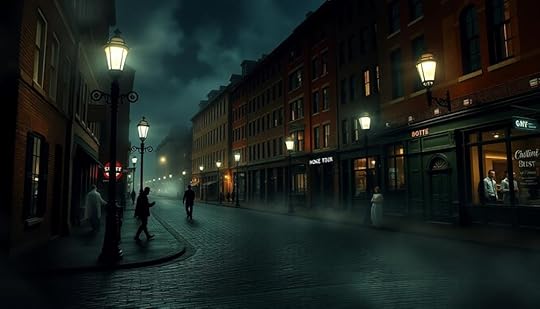
Boston's ghost tours offer an intriguing glimpse into the city's haunted past, blending historical narratives with spine-tingling paranormal experiences.
As you stroll through the historic streets, your knowledgeable guide will share chilling tales that bring Boston's haunted history to life. With a duration of 1.5 to 2 hours, these walking tours are suitable for all ages, making them a perfect outing for families and friends.
Here are three must-visit locations on these ghost tours:
Boston Common – Explore the city's oldest park, where whispers of the past linger among the trees.Granary Burying Ground – Step into the resting place of notable figures, where ghostly stories abound.Omni Parker House – Uncover the secrets of this historic hotel, famous for its eerie encounters.With prices generally ranging from $20 to $30 per person, these tours provide an affordable thrill, especially with discounts available for larger groups.
Plunge into the darkness of Boston's haunted heritage and create unforgettable memories on these enchanting ghost tours. Who knows what you might encounter along the way?
Eerie Visitor Accounts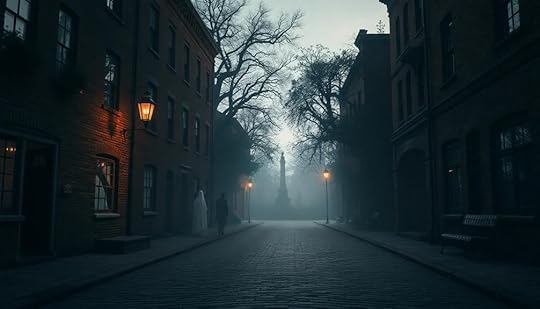
Visitors often recount unsettling experiences that amplify the thrill of exploring Boston's haunted sites. Many find themselves on ghost tours, where eerie sensations creep in as they approach historic locations like the Omni Parker House Hotel and Granary Burying Ground. You might hear whispers of disembodied voices or notice flickering lights, heightening your anticipation of an encounter with a Boston ghost.
At Kings Chapel Burial Ground, eyewitnesses describe spectral phenomena, including sightings of a nameless victim believed to have been mistakenly buried alive. As you wander near the graves of revered figures like Paul Revere and Samuel Adams, you may feel an inexplicable chill, as if someone is watching you.
At Fort Warren, visitors report sorrowful encounters with the spirit of Melanie Lanier, often spotting ghostly imprints in the snow near her execution site.
Meanwhile, patrons of the Cutler Majestic Theater frequently share tales of moving chairs and sudden outages, attributing these occurrences to the playful spirits of a ghostly couple and a little girl. These haunting experiences linger in your mind, making you question what truly lies beneath Boston's historic charm.
Exploring Boston's Dark History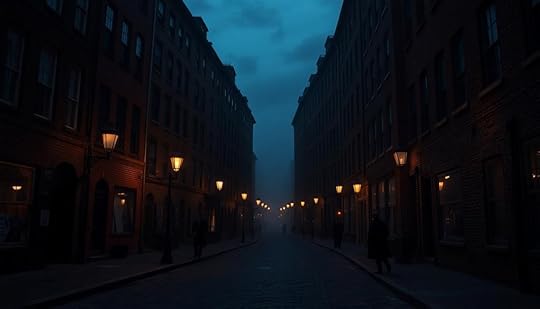
Delving into Boston's dark history reveals a tapestry of rebellion, tragedy, and haunting tales that echo through the ages. This city, founded in 1630, isn't just known for its revolutionary spirit but also for the shadows cast by its past.
Here are three haunting elements that define Boston's legacy:
Mary Dyer's spirit: Executed for her Quaker beliefs, her ghost is said to wander the streets, a reminder of the injustices she faced.Paul Revere's resting place: At Granary Burying Ground, visitors often feel an eerie presence, as if the echoes of his midnight ride linger among the tombstones.Fort Warren's Melanie Lanier: A tragic tale from the Civil War, her ghost searches for lost love, evoking sorrow in those who encounter her spectral figure.As you explore Boston, you can't help but feel the weight of its haunted past.
Every cobblestone and alleyway holds stories of rebellion, loss, and the restless spirits that refuse to fade into history.
The city's dark history invites you to dig deeper, revealing the chilling tales that still resonate today.
Notable Ghostly Legends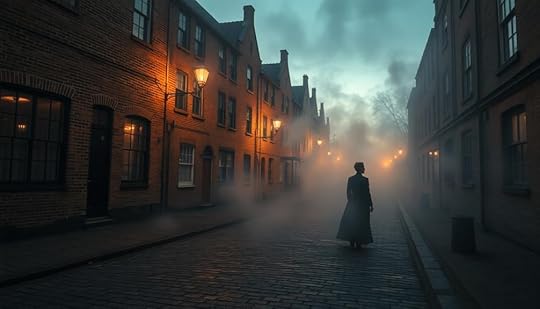
Ghostly legends weave through the fabric of Boston, enriching its historical narrative with chilling tales. From the Granary Burying Ground, where Paul Revere's ghost is often spotted on horseback, to the haunted grounds of Boston Common, where spirits of executed souls roam, these stories captivate the imagination.
LocationNotable LegendGranary Burying GroundPaul Revere's ghost appears on horseback.Kings Chapel Burial GroundHaunted by Captain Kidd and a victim buried alive.Fort WarrenSpirit of Melanie Lanier seeks her husband post-execution.Omni Parker House HotelHarvey Parker and Charles Dickens reportedly haunt rooms.Boston CommonGhostly figures of executed souls wander seeking justice.As you explore these sites, consider the tragic tales behind the hauntings. Each legend is a reminder of the past, urging you to listen closely for whispers of history. Whether you're drawn to Captain Kidd's spectral presence or the wandering spirits of Boston Common, these ghostly legends reveal the darker side of this historic city, inviting you to uncover their mysteries.
Tips for Haunted Explorations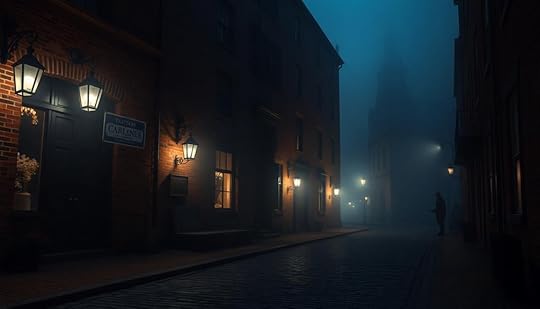
For those enthusiastic to uncover Boston's haunted history, joining a guided ghost tour can be a thrilling choice. These tours typically last 1.5 to 2 hours and lead you through significant locations like Boston Common and the Granary Burying Ground, where many souls rest.
To make the most of your experience, keep these tips in mind:
Arrive Early: Get to your meeting point, like the Robert Gould Shaw Memorial, at least 15 minutes prior. This guarantees you find your tour guide without a hitch.Dress for the Occasion: Whether rain or shine, be prepared for a leisurely walk of about 1.5 miles. Comfort will enhance your experience as you explore the eerie streets.Stay Alert: Keep your senses sharp. Many visitors have reported unexpected ghostly encounters during their explorations of Haunted Boston.Also, stay current on sales, as many tours offer discounts. Remember to check the cancellation policy; you can usually get a full refund if you cancel at least 24 hours in advance.
Embrace the thrill and enjoy your haunted adventure!
Frequently Asked QuestionsAre There Bodies Buried Under Boston Common?Yes, there are bodies buried under Boston Common. Historically, it served as a burial site during epidemics and the Revolutionary War, leaving unmarked graves that contribute to the area's spooky legends and ghost stories.
What Is the History of the Pilot House in Boston?They say history's ghosts never rest. The Pilot House Inn, built in the late 19th century, served sailors and travelers, but its haunted past—complete with mysterious footsteps—continues to intrigue guests to this day.
ConclusionSo, you might think Boston's haunted tales are just folklore, but these stories are woven into the city's very fabric. As you explore its cobblestone streets and historic sites, you'll feel the echoes of the past whispering around you. Whether you're a skeptic or a believer, there's something thrilling about uncovering the eerie secrets that lie beneath the surface. So grab a friend, join a ghost tour, and immerse yourself in the spine-chilling charm of Boston's hidden haunts.
November 25, 2024
What if Monster Activity Reaches Its Peak During Eclipses
If monster activity peaks during eclipses, you might find eerie parallels to ancient beliefs. Cultures saw eclipses as moments when mythical creatures emerged, like the Aztecs fearing jaguars attacking the sun. You could witness odd animal behaviors too—diurnal animals may act erratically while nocturnal ones come alive with excitement. This celestial phenomenon can shift ecosystems, affecting predator-prey dynamics and pollinators. Imagine the supernatural vibes in such a setting! Every eclipse carries rich historical significance and compelling stories about monsters. There's more to explore about these phenomena and their intriguing connections to myth and wildlife.
Key TakeawaysMany ancient cultures believed eclipses were linked to monstrous activity, suggesting a peak in mythical creature occurrences during these events.Norse mythology's wolves, Skoll and Hati, are said to chase the sun and moon, symbolizing an increase in monstrous activity during eclipses.Eclipses often prompted rituals and fear of divine wrath, reflecting societal beliefs in monster emergence tied to these celestial events.Animal behavior during eclipses, such as confusion or increased activity, could symbolize a disruption in natural order attributed to monster activity.Historical accounts show eclipses influenced perceptions of danger, leading to a heightened belief in monster encounters during these celestial phenomena.Mythical Creatures and Eclipses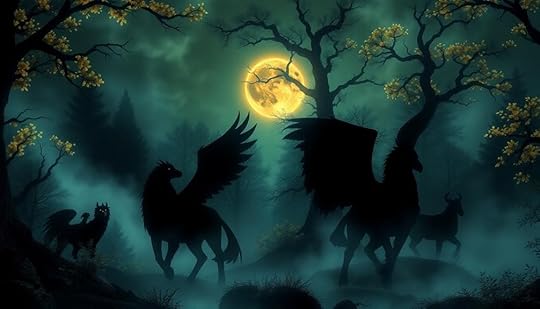
Throughout history, many ancient cultures have linked eclipses to the activity of mythical creatures. During solar eclipses, people often believed that these celestial events signified the presence of supernatural beings. For instance, the Aztecs feared a giant serpent threatening the sun, while Hindu mythology told of the demon Rahu swallowing it whole.
You might find it fascinating how Norse mythology introduces Skoll and Hati, wolves that chase the sun and moon, with eclipses symbolizing their fleeting capture of these celestial bodies.
In various folklore, dragons and serpents are depicted as consuming the sun, a motif especially prevalent in ancient China, where eclipses were described as the sun being "eaten." This theme of mythical creatures becoming more active during eclipses reflects a common belief across many cultures that these celestial events bring heightened supernatural occurrences.
Even today, you might notice echoes of these ancient beliefs in contemporary folklore, where eclipses are seen as harbingers of chaos and mystical happenings.
Animal Behavior During Eclipses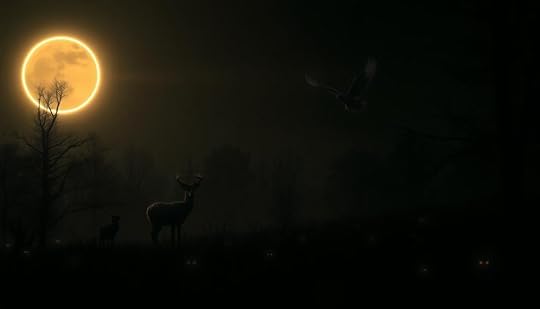
Eclipses don't just captivate human imaginations; they also trigger fascinating responses in the animal kingdom. During a solar eclipse, you might observe various changes in animal behavior that can affect entire ecosystems.
Here are a few notable reactions:
Diurnal animals often become confused, leading to erratic movements and disruptions in their feeding patterns.Nocturnal creatures, such as bats, may mistakenly interpret the sudden darkness as nighttime and become active.Certain animals, like gorillas, march to their dens prematurely, while flamingos cluster protectively around their young during totality.Ecosystems experience temporary shifts in predator-prey dynamics, with pollinators halting their activities and aquatic life reacting to changes in light levels.These behaviors highlight the intricate connections between light and animal instincts. The sudden darkness of an eclipse can create a ripple effect, leading to disruptions that affect numerous species.
Watching these changes unfold can deepen your appreciation for the delicate balance of nature and how even a brief celestial event can influence the lives of countless creatures.
Cultural Beliefs About Monsters
Many cultures have linked eclipses to the emergence of monsters or malevolent beings, reflecting deep-seated fears about cosmic disruptions. For instance, in Norse mythology, wolves chase the sun and moon, threatening their existence during an eclipse.
You might find it fascinating that in Mexican folklore, the Aztecs believed an eclipse signified the jaguar god's attack on the Sun, symbolizing chaos and the potential for monstrous disruptions in the natural order.
Ancient Chinese culture also tied eclipses to celestial dragons that devoured the sun or moon, raising societal fears of monstrous retribution for human misdeeds.
In Hindu mythology, the demon Rahu is said to swallow the sun during a solar eclipse, embodying a monstrous force that disrupts cosmic balance. To appease this threat, rituals are often performed.
Native American and African traditions echo similar sentiments; they depict eclipses as moments when monsters and spirits become more active. During these times, communities engage in rituals aimed at fending off perceived threats.
These cultural beliefs highlight how eclipses ignite fears of chaos, driving societies to confront the unknown lurking in the shadows of the cosmos.
Historical Accounts of Eclipses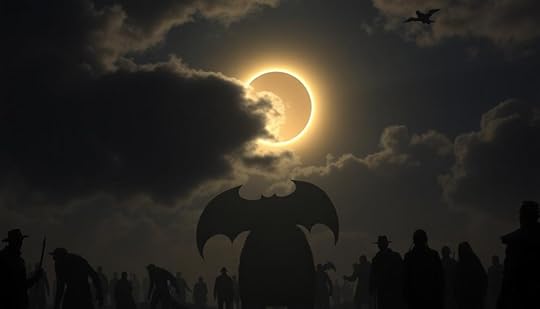
Celestial events like solar eclipses have historically sparked intense reactions across cultures, often interpreted as ominous signs.
These interpretations influenced actions and beliefs, particularly during solar and lunar eclipses. You might be surprised by how different civilizations responded to these significant events:
Babylonians: They were pioneers, accurately predicting eclipses as early as the 8th century BCE, which allowed them to prepare for potential disasters.Ancient Greeks: They viewed eclipses as anger from the gods, leading them to engage in public rituals aimed at placating these deities.Ancient China: Eclipses were seen as dire omens for the emperor, prompting elaborate ceremonies to avert misfortune and maintain harmony throughout the domain.Notable Historical Events: The eclipse of the sun in 585 BCE during the battle between the Medes and Lydians exemplified how such celestial occurrences could shift military strategies and political decisions.These historical accounts reveal how intertwined the perception of eclipses was with the fabric of society, shaping decisions that resonated through history, driven by the fear of disaster and the desire to appease the cosmos.
Scientific Exploration of Eclipses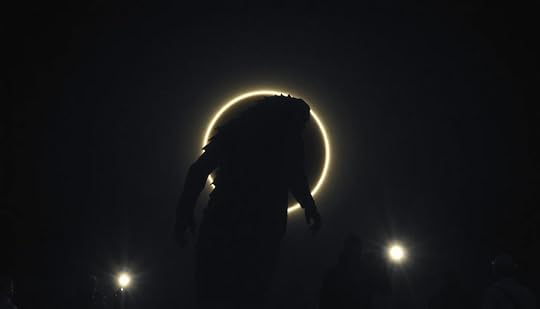
The phenomenon of an eclipse captivates both scientists and enthusiasts alike, offering a rare chance to explore the mysteries of our solar system. An eclipse occurs when the Moon passes between the Earth and the Sun, with total solar eclipses providing a few precious minutes to study phenomena usually hidden from view. Historically, people believed these events held special importance, but today, they serve as essential opportunities for scientific exploration.
AI-driven personalization in E-learning can also enhance educational experiences related to eclipses, allowing students to engage with the material in ways that resonate with their learning styles.
During a total solar eclipse, the Moon completely covers the Sun, allowing researchers to examine the solar corona and gather data on solar activity. Locations within the path of totality, particularly in North America, become prime spots for observation.
The precise predictions of when and where these celestial events will occur, based on astronomical calculations, have evolved markedly since ancient times. The Babylonians and Greeks, for example, were adept at forecasting eclipses using cyclical patterns like the Saros.
Moreover, notable discoveries, such as the confirmation of Einstein's theory of general relativity during the 1919 solar eclipse, underscore the importance of these events in advancing our understanding of the universe, just as the transit of Venus once did.
ConclusionAs the moon swallows the sun, shadows dance and whispers of ancient monsters awaken. Just like the eclipse, your fears may seem intimidating, but remember, they often hide in the light of understanding. By exploring the legends and behaviors linked to these celestial events, you'll uncover the truth behind the chaos. Rather than shying away from the darkness, embrace it; for in its depths, you'll find the courage to face the monsters that lurk within and without.
Haunted Washington, D.C.: Ghosts of the Nation’s Capital Exposed
Washington, D.C. is a treasure trove of haunting tales that'll send chills down your spine. You'll find the spirit of Abraham Lincoln wandering the White House, and the ghost of John Quincy Adams lingering in the U.S. Capitol. Each haunted site, like the eerie Octagon House and Lafayette Square, reveals stories of past tragedies and legends that shape the city's charm. Local ghost tours bring these narratives to life, immersing you in D.C.'s spectral history. And that's just the start—there's so much more to uncover if you're enthusiastic to experience the city's haunted side.
Key TakeawaysThe White House is famously haunted by Abraham Lincoln, with sightings reported by notable figures throughout history.The U.S. Capitol features the legend of the Demon Cat and the ghost of John Quincy Adams roaming its halls.The Octagon House offers ghost hunting experiences, attracting visitors with its spectral lights and mysterious bell ringing.Lafayette Square is known for the ghost of Philip Barton Key, believed to warn of dangers related to his tragic past.Seasonal ghost tours and events promote D.C.'s haunted history, engaging both locals and tourists in its rich cultural narrative.Haunted Locations in D.CWhen you explore Washington, D.C., you might find that its historic sites aren't just steeped in politics and power but also in ghostly tales.
The White House, for instance, is notoriously haunted, with sightings of ghosts like Abraham Lincoln and Andrew Jackson. President Truman even documented eerie experiences in letters, adding to its ghost stories.
Another notable location is the U.S. Capitol, steeped in its own history of hauntings. Here, the legend of the Demon Cat circulates, appearing before national tragedies, while the ghost of John Quincy Adams is said to roam the building where he passed.
Don't miss the Octagon House, once home to James and Dolley Madison, where spectral lights and bells ringing at odd hours pique curiosity.
Lafayette Square also hosts the ghost of Philip Barton Key, warning against assassination attempts linked to his tragic past.
Notable Ghostly Figures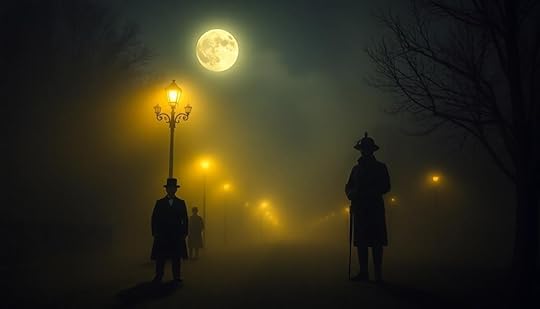
The haunting tales of Washington, D.C. are often tied to notable figures whose spirits continue to linger in the shadows.
If you think you're brave enough to join a ghost tour, you might encounter some of these ghostly figures who played a significant role in the nation's political history:
Abraham Lincoln: His ghost is frequently reported in the White House, with sightings by figures like First Lady Grace Coolidge.Andrew Jackson: Known for haunting the Rose Room, his stomping and cursing can sometimes be heard echoing through the halls of this haunted building.Marion Clover Hooper Adams: This tragic figure lingers at the Hay-Adams Hotel, where guests notice her scent and swaying chandeliers.Philip Barton Key: Spotted in Lafayette Square, he's believed to warn of assassination attempts, stemming from his own murder in 1859.John Quincy Adams: The spirit of this former president is said to haunt the U.S. Capitol, with his last words echoing through the halls.These ghostly figures offer a chilling glimpse into the haunted history of Washington, D.C., making it a must-visit for any ghost enthusiast.
Cultural Impact of Hauntings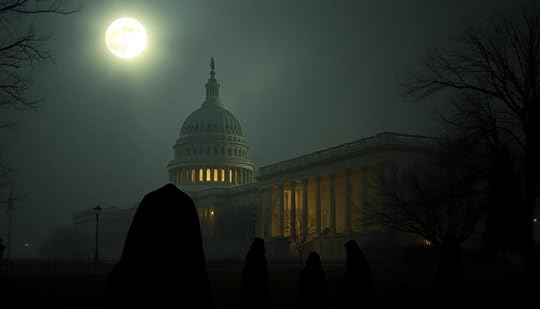
Ghost stories in Washington, D.C. aren't just spooky tales; they weave a rich tapestry of the city's historical narrative. These hauntings connect influential figures to the architecture that defines the capital, intertwining political history with local lore. This cultural engagement draws visitors, offering them a glimpse into the darker aspects of D.C.'s past.
AspectDescriptionImpactHauntingsLegends like the White House ghostEnhance tourismCommunity EventsSeasonal ghost tours and Halloween eventsFoster cultural engagementLandmarksHaunted sites like the U.S. CapitolPromote awareness of historyParanormal InterestEngages the public with museumsDeepen understanding of heritageGhost narratives reflect societal fears, revealing how past tragedies resonate today. The seasonal spike in paranormal interest fuels community events that strengthen local ties. Each ghost story not only serves as entertainment but also acts as a conduit for exploring the city's rich history. In this way, hauntings play a crucial role in keeping Washington D.C.'s narrative alive, fostering a unique blend of tourism and cultural engagement.
Engaging Visitor Experiences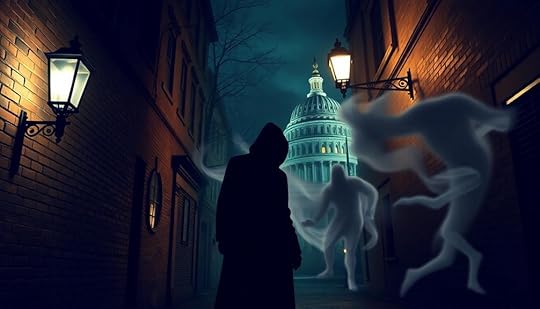
Exploring haunted locations in Washington, D.C. immerses you in the city's eerie history, blending the thrill of ghost stories with the significance of each site.
Guided ghost tours reveal the chilling past of iconic landmarks like the White House and U.S. Capitol, making your visitor experiences unforgettable. The cancellation policies of cruise lines can be as intricate as the ghost stories that haunt D.C., reminding travelers to prepare for their adventures carefully.
You'll discover:
The Octagon House: Join ghost hunting experiences on Fridays, where spectral lights and ringing bells create a spine-tingling atmosphere.The Hay-Adams Hotel: Experience its haunted ambiance, where the scent of Marion Clover Hooper Adams and a swaying chandelier have intrigued guests.DC Ghost Tours: Engage in an immersive experience that uncovers tales of presidents, assassins, and conspirators, enhancing your understanding of the historical significance of these haunted locations.Boos and Booze Haunted Pub Crawl: Combine ghostly narratives with visits to local bars, giving a unique twist to your exploration.Personal encounters: Many participants share thrilling stories of their own ghostly experiences, adding a personal touch to the already rich tapestry of D.C.'s haunted legacy.These experiences guarantee you'll leave with more than just spooky tales; you'll carry a piece of history with you.
Additional Haunted Sites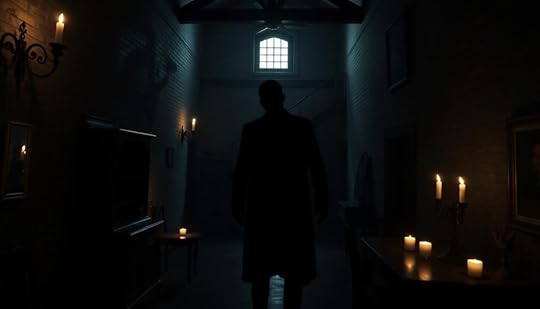
While wandering through Washington, D.C., you'll encounter a variety of haunted sites that deepen the city's rich tapestry of history and lore.
Start your journey at the Old Stone House, the oldest structure on its original foundation in D.C., where at least 11 different apparitions, including a stout woman and a boy named Joey, are rumored to roam.
Next, head to the Exorcist Steps, famous for their role in the 1973 horror film. They draw horror fans and Georgetown University students keen to connect with cinematic history.
Don't miss Oak Hill Cemetery, celebrated for its architectural beauty and ghostly tales, as it serves as the final resting place for notable figures like Willie Lincoln.
Nearby, Holy Rood Cemetery, one of the best-documented burial grounds for African Americans, has seen revitalization efforts that honor its history.
Finally, explore the Smithsonian Castle, known for its eerie ghostly tales and strange phenomena, adding to its reputation as a haunted site in the National Mall.
As you stroll these historic streets, listen closely for whispers of the past and the apparitions that may still linger.
Frequently Asked QuestionsIs the US Capitol Building Haunted?You'll find many believe the U.S. Capitol Building is haunted. Stories of spectral figures and eerie occurrences circulate, with visitors and staff reporting strange sights and sounds that can't easily be explained away.
Why Is the White House Haunted?The White House is like a time capsule, holding echoes of history. Its haunted reputation stems from the many significant figures who've lived there, their unresolved emotions lingering, creating an atmosphere thick with ghostly tales.
How Many Ghosts Are There in the Capitol Building?You'll find numerous ghostly reports in the Capitol Building, with at least four notable spirits tied to its history. Each ghost has a unique story, reflecting the tragic events that shaped this iconic structure.
Is Mount Vernon in Virginia Haunted?You might find Mount Vernon haunted, as many visitors report cold spots and eerie sounds. Some claim they've seen George Washington's spirit wandering the grounds, adding to its mysterious allure and historical significance.
ConclusionSo, next time you're wandering the streets of D.C., don't be surprised if a ghostly politician brushes past you, still fighting for a cause long forgotten. After all, with all the history packed into this city, it's no wonder the spirits just can't take a hint and move on. Embrace the hauntings; they're just the ultimate lobbyists, trying to keep their legacies alive. Who knew democracy came with a side of the supernatural?
November 24, 2024
What if Cryptids Hold Secret Gatherings in Hidden Locations
If cryptids hold secret gatherings in hidden locations, it suggests they have intricate social structures and communication systems. You might find them meeting in remote forests or abandoned caves, away from human eyes. Witnesses often report strange sounds and unusual formations that hint at these events. These gatherings could serve various purposes, like territorial displays or communal rituals. The legends surrounding these creatures imply they may act as guardians of their domains. If you're curious about the specific locations and behaviors attributed to these cryptid meet-ups, there's plenty more to uncover about their mysterious world.
Key TakeawaysCryptids may gather in secluded locations like remote forests and caves, evading human detection while engaging in social interactions and rituals.Witness accounts and local folklore suggest organized meetings coincide with specific lunar phases and unusual environmental phenomena.Communication among cryptids likely involves vocalizations, body language, and territorial markings, indicating complex social structures and hierarchies.Evidence of unusual formations and altered vegetation at gathering sites supports the idea of community behaviors rather than solitary existence.Historical accounts and legends link cryptids to nature's guardianship, enhancing the mystery and cultural significance surrounding their potential gatherings.The Nature of Cryptid Gatherings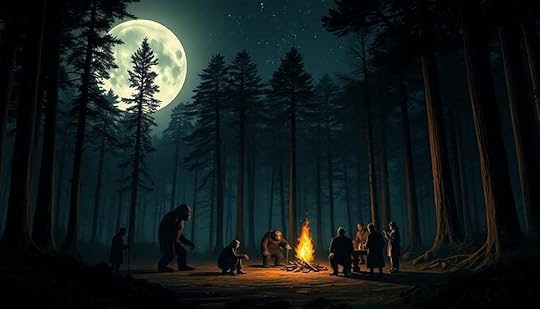
When it comes to cryptid gatherings, many believe these events take place in remote, hidden locations shrouded in mystery. You might find yourself wondering why these gatherings happen in such secluded areas, especially since they're often linked to reports of unexplained phenomena and disappearances.
These cryptids, like Bigfoot and the Jersey Devil, are said to come together for ritualistic events, communicating and engaging in territorial displays.
The presence of unusual sounds and lights around known habitats suggests that supernatural phenomena accompany these meetings, making it even harder for you to catch a glimpse. If you were to stumble upon one of these gatherings, you might notice varied behaviors among the cryptids. Some seem aggressive or protective of their territory, letting us know that they're not keen on intrusions.
Moreover, the existence of covert government operations, such as the Cryptid Containment Division, hints that authorities are aware of these gatherings. They might actively monitor or disrupt these events to keep the public in the dark, prompting cryptids to go away from human attention.
With all this secrecy, it's no wonder the nature of cryptid gatherings remains an enigma.
Evidence of Secret Meetings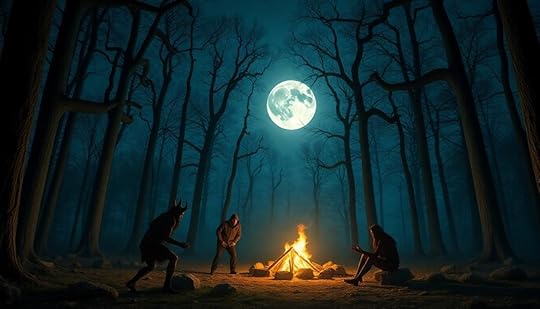
When you explore the evidence of cryptids' secret meetings, you'll notice several intriguing gathering locations that people have speculated about.
Witness accounts often document strange occurrences and patterns in sightings that suggest these beings aren't just solitary creatures.
As you piece together these details, a clearer picture of their hidden social gatherings starts to emerge.
Gathering Locations SpeculatedIn the depths of secluded forests and remote mountain ranges, cryptids like Bigfoot and the Wendigo are rumored to gather in secret. These gathering sites, often hidden from human eyes, are speculated to be places where unusual formations, such as intricate tree structures and unnaturally arranged stones, appear.
Locals attribute these peculiarities to cryptid activity, believing they serve as markers for secret meetings. Folklore adds another layer, pointing to specific hotspots like the Pine Barrens for the Jersey Devil or the Appalachian Mountains for Bigfoot.
These areas not only boast frequent sightings but also rich tales of the strange events tied to them. As you explore these regions, your senses heighten, especially during natural phenomena like full moons or meteor showers when cryptid activity reportedly peaks.
Investigations suggest that abandoned buildings and caves might also play a role as clandestine meeting spots. When multiple sightings cluster around these locations, it raises the question: are these cryptids truly converging for secret assemblies?
Whether driven by instinct or necessity, the mystery deepens when you consider the possibility of their hidden gatherings in these overlooked places.
Witness Accounts DocumentedNumerous witness accounts from remote areas provide compelling evidence of cryptids gathering in secret. Locals often describe sightings of multiple cryptids congregating in unusual formations, hinting at organized meetings in hidden locations.
In cryptid habitats like the Appalachian Mountains, clusters of sightings coincide with local folklore, particularly during specific lunar phases when these gatherings may occur.
Witnesses report strange lights and sounds near these habitats, leading to speculation that cryptids might be communicating or conducting rituals at night. Testimonies also reveal unexplained disappearances of livestock and signs of unusual activity, reinforcing the idea that cryptids convene in isolated settings.
Evidence collected from high-activity areas, such as unusual footprints or altered vegetation, supports the notion of gatherings rather than solitary existence.
These documented encounters not only deepen the mystery surrounding cryptids but also invite further investigation into the possibility of their secret meetings. As you navigate through these accounts, you can't help but wonder what truly happens when the sun sets and these elusive creatures gather in the shadows, hidden from the prying eyes of humanity.
Patterns in SightingsCryptid sightings often reveal intriguing patterns that suggest secret meetings among these elusive beings. You might notice that many sightings coincide with unusual environmental phenomena, like full moons or significant storms. These events could point to specific times and secluded locations where cryptids gather.
For instance, multiple reports of the Wendigo in northern Alaska show that these creatures may coordinate their movements, appearing around similar timelines.
Witness accounts often mention a series of lights or sounds prior to cryptid sightings, hinting at organized gatherings or communication methods among these beings. Local legends frequently reference particular locations, such as caves or ancient trees, which may serve as meeting points. This reinforces the idea that cryptids seek hidden gatherings in natural settings.
Moreover, the clustered nature of disappearances and strange occurrences in certain regions suggests that cryptids utilize remote forests and mountainous terrains for their secret meetings.
Cryptid Communication Methods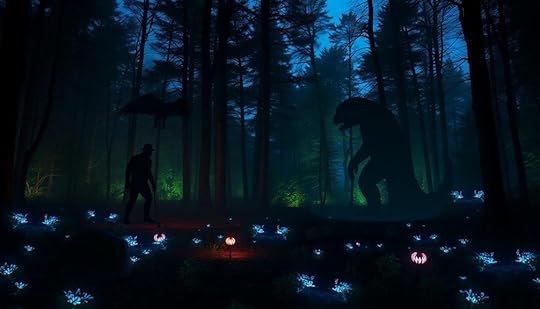
Whispers of the wild reveal a fascinating tapestry of communication among cryptids, where vocalizations, body language, and territorial markings intertwine. These mysterious beings often use growls and howls to establish social hierarchies and convey warnings to their kin. Their communication isn't limited to sounds; gestures play a significant role too, signaling intentions and emotions within their groups.
Some reports suggest cryptids possess heightened senses, allowing them to detect pheromones and subtle environmental changes. This means they can communicate non-verbally, maintaining a level of secrecy that keeps humans oblivious. Local legends hint at gatherings at specific natural landmarks, indicating a shared understanding of geography and possibly a structured social organization among various species.
Low-frequency sounds add another layer, facilitating long-distance communication that's often inaudible to human ears. This ability helps cryptids coordinate movements and alert each other to potential threats.
Observations of intelligent behavior, like manipulating objects or using tools, further suggest that their communication strategies are complex, transcending mere instinct. In this intricate web of interaction, cryptids display a rich social life that continues to intrigue and inspire curiosity.
Locations of Interest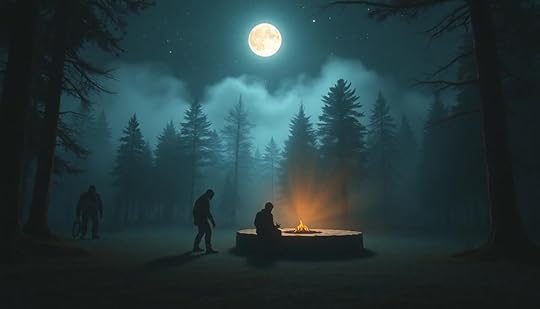
Frequently, remote and secluded locations serve as prime gathering spots for cryptids, allowing them to evade human detection. These hidden clearings in dense forests, caves, and mountainous regions provide the perfect backdrop for secret gatherings.
For instance, in Point Pleasant, West Virginia, the abandoned Silver Bridge has become a hotspot, with witnesses reporting strange lights and figures that hint at cryptid activity.
In Northern Alaska, the uninhabited wilderness around the Brooks Range has locals claiming they've heard eerie sounds and seen sightings suggesting these creatures meet there.
The Pacific Northwest, notorious for Bigfoot sightings, features dense, foggy woods that act as natural cover, leading to numerous hidden clearings where cryptids might congregate.
Furthermore, caves in the Appalachian Mountains, especially the Mammoth Cave system, are theorized to serve as safe havens. These caves offer shelter and a network of concealed paths, facilitating movement among various cryptids.
Each of these locations underscores the idea that cryptids have their own secret worlds, cleverly hidden from our view, where they can gather and interact away from prying eyes.
Implications of Cryptid Intelligence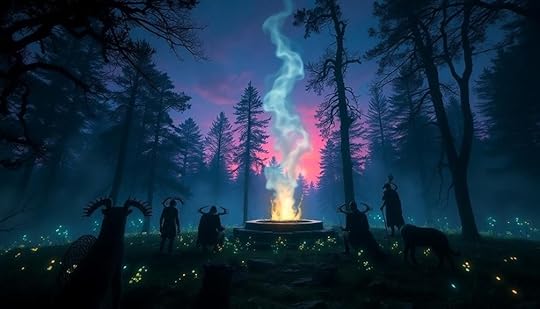
The intelligence displayed by various cryptids raises intriguing questions about their capabilities and social structures. If you consider the cunning behavior of creatures like the Wendigo, it's clear they possess cognitive functions that extend beyond mere instinct. Their ability to manipulate objects and evade traps suggests a level of awareness that could facilitate complex social interactions.
Evidence of IntelligenceImplicationsManipulation of objectsAdvanced cognitive functionsStrategic movementsPotential organizational structuresConsistent sighting patternsPossible communication methodsThese characteristics imply that cryptids may engage in secret gatherings, sharing knowledge about their environment and threats. Local legends often hint at their ancient wisdom and connection to nature, signaling a deeper communal knowledge. In addition, sightings following unusual human activities suggest an awareness of our presence and its implications for their survival.
In essence, the intelligence of cryptids may not only redefine how we view these beings but also prompt a reevaluation of our relationship with them. Understanding their intelligence could lead to greater insights into their elusive gatherings and the mysteries they hold.
Historical Accounts and Legends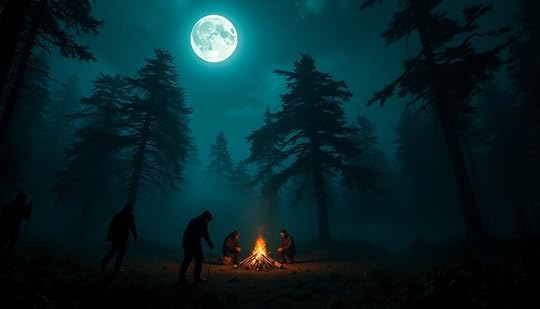
You might be surprised to learn how deeply rooted historical accounts and legends are in the fabric of cryptid lore.
From ancient rituals tied to the Wendigo to the eerie gatherings of the Jersey Devil, these stories shape our understanding of cryptids' cultural significance.
Let's explore some notable sightings and the beliefs that surround them, revealing the mysteries hidden within these tales.
Ancient Rituals and BeliefsThroughout history, various cultures have woven tales around cryptids, viewing them as powerful guardians of nature and sacred lands. These ancient cultures believed that beings like Bigfoot and the Wendigo held significant roles in their rituals, often intended to appease or communicate with these elusive entities.
For instance, Indigenous tribes in North America told stories of the Wendigo, a malevolent spirit that influenced their beliefs about survival and respect for nature.
Similarly, the Chupacabra emerged in folklore as a creature tied to agricultural practices, prompting rituals designed to protect livestock from its predation.
You might find it fascinating that many legends suggest cryptids gather under the full moon, engaging in rites that reflect natural cycles and the balance of the ecosystem.
Hidden locations like remote caves and ancient forest groves are thought to serve as meeting places for cryptids, where they perform rituals that maintain their connection to the spiritual world.
These accounts reveal a deep respect for nature and its mysteries, inviting you to ponder what might unfold when these cryptids truly come together in secret gatherings.
Notable Cryptid SightingsMany intriguing accounts of cryptid sightings have emerged over the years, capturing the imaginations of those who hear them. Legends of Bigfoot and the Jersey Devil often involve encounters in remote, hidden locations, particularly during the full moon. These sightings lead to speculation about secret gatherings where these cryptids might share knowledge or power.
Native American lore frequently highlights Wendigo-like creatures, believed to congregate in secluded areas, showcasing a deep cultural connection to these beings.
In the 1970s, the Pacific Northwest saw multiple Sasquatch sightings that suggested coordinated behaviors, hinting at complex social structures and possible gatherings among them.
Similarly, the Mothman sightings in Point Pleasant, West Virginia, before the Silver Bridge collapse in 1967, have stirred debate about cryptid communication and warnings. Many believe these encounters indicate more than just chance sightings—they may reflect cryptids acting as guardians of hidden domains.
These historical accounts and legends weave a fascinating narrative, suggesting that cryptids may not just exist in isolation but could be part of a larger, mysterious community that meets in the shadows of our world.
Folklore and Cultural SignificanceCryptids have long played an essential role in folklore, embodying cultural beliefs and values across various societies. Take the Wendigo, for instance; this malevolent spirit symbolizes insatiable hunger and winter starvation in many Indigenous cultures of North America.
Historical accounts of the Jersey Devil trace back to the 18th century, where sightings in the Pine Barrens evoke fear and the unknown, rooted in tales of a cursed mother.
Then there's the Mothman, first reported in Point Pleasant, West Virginia, in the 1960s. It represents foreboding and disaster, often linked to the tragic Silver Bridge collapse in 1967. These stories highlight the cultural significance of cryptids as warnings or guardians of the natural world.
The Loch Ness Monster, too, has woven itself into local culture since the 6th century, inspiring legends and boosting tourism through its mysterious allure.
These hidden locations where cryptids are said to gather reflect a balance between humanity and nature, emphasizing the deep connection between folklore and environmental awareness.
Ultimately, cryptids serve as powerful symbols, reminding you of the mysteries that still exist in the world.
ConclusionSo, what if cryptids truly do hold secret gatherings in hidden locations? If these elusive beings possess intelligence and communication methods beyond our understanding, we might be missing an essential piece of the puzzle. The legends and historical accounts hint at a deeper connection between humans and these mysterious creatures. By exploring these hidden truths, we could reveal not only the secrets of cryptids but also gain insights into our own relationship with the natural world.
What if Archaeological Sites Hold Clues to Ancient Monster Cities
Archaeological sites might just hold the secrets to ancient monster cities, like Teotihuacan and Angkor. These monumental structures reveal advanced engineering and urban planning that supported massive populations. You'll discover how these civilizations utilized innovative agricultural practices and impressive water management systems. As you explore the evidence of societal decline—caused by environmental changes and warfare—you'll gain a clearer understanding of their rise and fall. Hidden urban complexes are still being uncovered today, offering fresh insights into these fascinating cultures. Join the journey to uncover what these ancient cities can teach us about sustainability and urban life.
Key TakeawaysArchaeological sites reveal advanced urban planning and engineering that supported large populations in ancient monster cities like Teotihuacan and Angkor.LIDAR technology uncovers hidden urban complexes, providing insights into the organization and development of ancient civilizations.Cultural artifacts from these sites illustrate the social structures and daily life of inhabitants in ancient monster cities.Studies of abandoned sites highlight environmental challenges and resource management issues that led to the decline of these once-thriving urban centers.Ongoing research may uncover more forgotten cities, enhancing our understanding of ancient civilizations and their complexities.The Concept of Monster Cities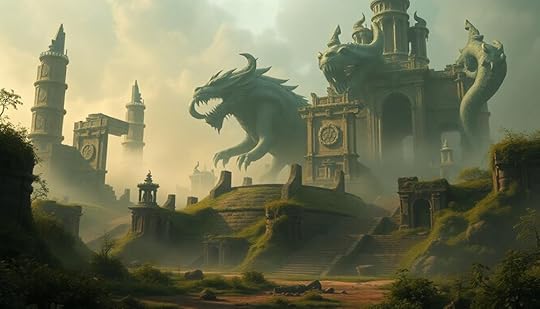
In ancient times, monster cities emerged as remarkable urban centers, often home to over 100,000 people at their peak.
These ancient settlements showcased the incredible engineering capabilities of their civilizations. You'd find advanced architectural features, monumental structures, and intricate urban planning that highlighted the sophistication of their societies. Cities like Teotihuacan and Angkor exemplified this concept, demonstrating how complex social and political structures could manage trade, agriculture, and religious practices.
The vast networks of agriculture and resource management supported these large populations, contributing to their economic prosperity.
As you explore these ancient settlements, it becomes clear that they thrived due to careful organization and innovative practices.
However, many of these cities were eventually abandoned. Environmental changes, resource depletion, and sociopolitical factors played significant roles in their decline, prompting you to wonder about the lessons they hold for modern societies.
Archaeological Evidence of Advanced Civilizations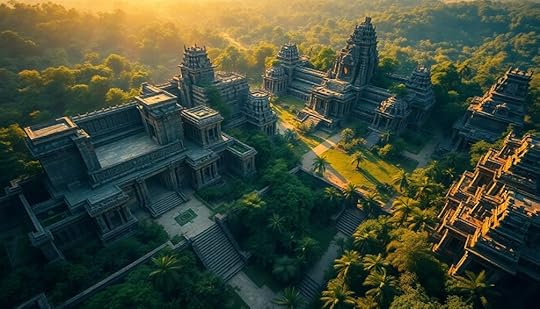
As you explore the remnants of ancient urban complexes, you'll uncover architectural innovations that showcase the ingenuity of past civilizations.
Discovering cultural artifacts further reveals the rich histories and advanced societies that once thrived in these monster cities.
Each finding adds a layer to our understanding of how these remarkable cultures developed and organized their communities.
Lost Urban ComplexesLost urban complexes, often referred to as "monster cities," reveal the remarkable ingenuity of ancient civilizations. As you explore various archaeological sites, you can see clear evidence of advanced urban planning and societal structures that supported large populations.
Here's what you might uncover:
Angkor: A marvel of water management and urban design.Teotihuacan: A sprawling city with impressive pyramids and avenues.Tikal: Extensive layouts showcasing monumental architecture and agricultural terraces.Machu Picchu: Ingenious engineering in a challenging mountainous terrain.Petra: Advanced water systems facilitating trade in a harsh desert.Technological advancements like LIDAR have helped reveal hidden urban complexes in dense jungles, particularly within the Maya lowlands. These discoveries highlight the extensive networks of ancient cities, showing that civilizations like those in Chichén Itzá and the Great Pyramids of Giza not only built impressive structures but also developed large-scale infrastructure.
The interplay of engineering prowess and organizational skills is evident throughout these archaeological sites, offering valuable insights into how these ancient "monster cities" functioned.
Architectural Innovations RevealedUnearthing the architectural innovations of ancient civilizations reveals the incredible ingenuity behind structures that have withstood the test of time.
Take Machu Picchu, for example. Its sophisticated dry-stone construction not only defies seismic activity but also reflects advanced engineering techniques.
The Great Wall of China, stretching over 13,000 miles, showcases military architectural innovations designed for defense while facilitating communication and troop movement.
Additionally, the dietary practices of ancient societies, such as the nutritional value of chia seeds, demonstrate how resourcefulness extended beyond architecture to encompass sustainable food sources.
In the arid landscapes of Petra, the Nabataeans demonstrated remarkable skill in water conservation through their intricate system of cisterns and aqueducts, allowing them to thrive in harsh conditions.
Tikal's urban planning reveals the Maya civilization's organizational capabilities, supporting a population of around 100,000 with its towering pyramids and complex residential areas.
Cultural Artifacts DiscoveryThe architectural marvels of ancient civilizations are often accompanied by a wealth of cultural artifacts that shed light on their complexities.
These artifacts reveal not just the daily lives but also the beliefs and values of the societies that created them. The impact of these discoveries extends beyond mere historical curiosity, as they can influence contemporary discussions on diversity through global creators, enriching our understanding of how different cultures have shaped human history.
Consider the following examples of cultural artifacts:
The terracotta army near the Tomb of Qin Shi Huangdi, showcasing elaborate burial practices.Intricate bas-reliefs at Angkor Wat, illustrating the religious beliefs of the Khmer Empire.Well-preserved frescoes in Pompeii, providing glimpses into Roman social structures.Dry-stone constructions in Machu Picchu, reflecting advanced engineering techniques and resilience.The grid layout of Teotihuacan, signifying sophisticated urban planning.Each of these discoveries offers insights into how advanced these civilizations were, not only in architecture but also in art, engineering, and social organization.
By examining these cultural artifacts, you can piece together the intricate tapestry of human history, understanding how societies flourished and what legacies they left behind.
These findings enrich our knowledge and appreciation of ancient monster cities, revealing the depth of their cultural significance.
Urban Planning in Ancient Societies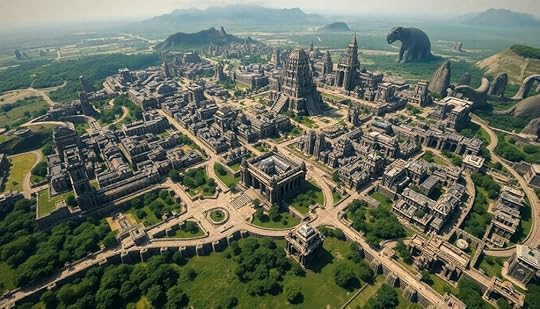
Ancient societies showcased remarkable urban planning skills that often laid the groundwork for their cultural and economic success. Take, for example, the ancient Roman cities, which featured grid layouts and advanced infrastructure that supported bustling populations. These cities weren't just functional; they reflected the power and organization of the Roman Empire.
Consider Tikal, where the Maya civilization employed a grid layout for organized residential and ceremonial spaces. Similarly, Teotihuacan demonstrated sophisticated planning with its intricate street layout and monumental pyramids, accommodating around 100,000 residents at its peak.
The Khmer Empire's Angkor boasted an extensive hydraulic system, incorporating canals and reservoirs that fostered growth between 800 and 1200 CE. Machu Picchu, with its terraced agriculture, illustrates how the Inca adapted their urban planning to the challenging Andean geography, ensuring sustainability.
Furthermore, the ziggurats of ancient Mesopotamia, like the Ziggurat of Ur, served as both religious and administrative hubs, seamlessly intertwining spiritual and civic life within the urban layout. These examples highlight the ingenuity of ancient urban planning, showcasing how it shaped societies and influenced their enduring legacies.
Cultural Practices and Artifacts
Exploring the vibrant cultures of ancient cities reveals a rich tapestry of practices and artifacts that define their identities. Each civilization left behind remnants that offer insight into their cultural practices, showcasing their values and daily lives.
For instance, monumental architecture like the pyramids of Tikal and the Great Wall of China signifies not only religious devotion but also societal structure and defense mechanisms.
Here are some key cultural practices and artifacts from ancient civilizations:
Monumental architecture: Structures like El Castillo in Chichén Itzá align with astronomical events, revealing the Maya's connection to the cosmos.Frescoes and pottery: Unearthed in Pompeii, these artifacts provide a glimpse into daily life, including food and entertainment.Military engineering: The Great Wall demonstrates the significance of defense, reflecting the ancient Chinese value of territorial integrity.Bas-reliefs: Found at Angkor Wat, these intricate carvings depict Hindu mythology, emphasizing spiritual beliefs.Ceremonial offerings: Artifacts from various sites illustrate the importance of rituals in maintaining cultural identity.Through these elements, we uncover the essence of ancient societies and their intricate cultural practices.
Decline and Abandonment of Cities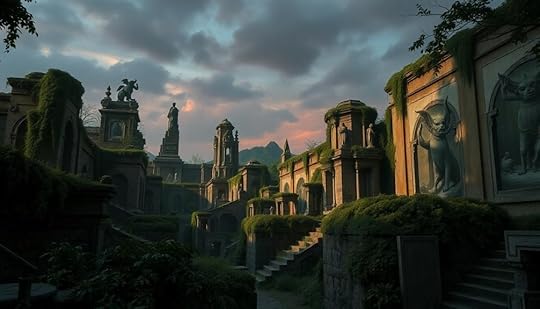
When you look at ancient cities like Tikal or Machu Picchu, you'll notice that their decline often stems from resource depletion and environmental changes.
Archaeological evidence shows how these once-thriving urban centers fell into neglect and abandonment.
Causes of Urban DeclineUrban decline often stems from a combination of environmental, economic, political, and social factors. When you explore archaeological sites, you'll uncover how these elements contributed to the abandonment of once-thriving cities.
Here are some key causes:
Environmental changes: Droughts or floods devastated cities like Tikal and Angkor, forcing inhabitants to leave.Economic shifts: Trade route changes, such as those that led to Petra's decline, drastically affected resource availability and prosperity.Political instability: Warfare and conflicts disrupted trade and societal structures, as seen in the fall of the Maya city-states.Natural disasters: Events like the eruption of Mount Vesuvius buried Pompeii under ash, leading to its sudden abandonment.Social transformations: Changes in cultural or religious practices can also drive urban decline, exemplified by Angkor's shift from Hinduism to Buddhism.Understanding these causes through archaeological sites not only sheds light on past civilizations but also provides insight into the dynamics that can lead to urban decline today.
Each factor played a significant role in shaping the histories of these cities, offering lessons for contemporary urban planning.
Archaeological Evidence of AbandonmentHow do we uncover the mysteries behind the decline and abandonment of ancient cities? By examining archaeological sites, you can piece together the stories of civilizations like Tikal, Teotihuacan, and Pompeii.
For instance, Tikal's dramatic population drop of up to 90% during the 9th century highlights how prolonged drought and deforestation led to its eventual abandonment. Similarly, Pompeii's fate was sealed by the eruption of Mount Vesuvius, which buried the city in ash, preserving a snapshot of Roman life.
Archaeological evidence from the Indus Valley Civilization suggests climate change and shifting river patterns may have played roles in its mysterious decline around 1900 BCE.
Meanwhile, Angkor's abandonment in the 15th century reflects a combination of overpopulation, environmental degradation, and changes in trade routes, as indicated by surveys of its failed water management systems.
These archaeological sites provide essential insights into the factors that contributed to urban decline, demonstrating how environmental pressures and human actions can lead to the fall of even the mightiest cities.
Lessons From Forgotten CitiesAmidst the ruins of forgotten cities, valuable lessons about resilience and vulnerability emerge.
These ancient urban centers, once thriving, fell into decline for various reasons, offering insights into the fragility of civilization. You can learn from their experiences, understanding the factors that contributed to their abandonment:
Resource Depletion: Cities like Teotihuacan faced decline due to the overuse of natural resources, emphasizing the need for sustainable practices.Environmental Challenges: Tikal's downfall illustrates how climate changes can disrupt communities.Conflict and Warfare: Many cities, including Angkor, succumbed to internal strife or external attacks.Sudden Disasters: Pompeii serves as a stark reminder of how quickly disaster can strike, leading to abrupt abandonment.Economic Shifts: The Ziggurat of Ur highlights how changing trade routes can destabilize a city's economy.Recognizing these patterns helps you understand the importance of sustainable practices and adaptability.
The stories of these ancient cities can guide modern societies in avoiding similar fates, reminding us that resilience is essential for survival amidst changing circumstances.
Case Studies of Notable Sites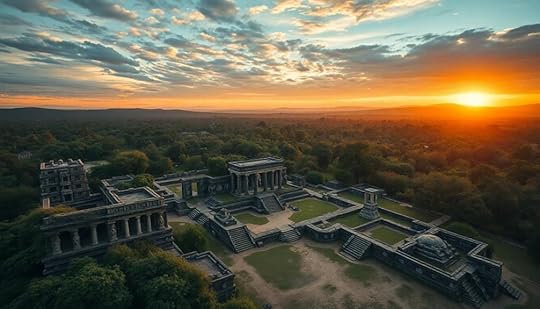
Exploring the remnants of ancient monster cities reveals the incredible ingenuity and complexity of early civilizations.
Take Angkor Wat in Cambodia, for instance. Originally constructed as a Hindu temple in the early 12th century, it showcases advanced urban planning and monumental architecture, hinting at the vibrant Khmer Empire and its sophisticated society.
Then there's Teotihuacan in Mexico, an archeological site that once housed around 100,000 people. Its vast layout and impressive Pyramid of the Sun illustrate the scale and ambition of one of the largest urban centers in the ancient world.
Machu Picchu, built around 1450 by the Incas, stands as a demonstration to advanced agricultural engineering. Its terracing techniques and strategic location in the Andes Mountains reveal the significance of this lost city.
In Mesoamerica, Tikal thrived from 200-900 CE, showcasing towering pyramids and a complex socio-political structure, reflecting the grandeur of Maya civilization.
Lastly, Pompeii, preserved under volcanic ash, provides a unique snapshot of Roman urban life, with its buildings and streets still intact.
Each of these archeological sites offers invaluable insights into ancient monster cities and their inhabitants.
Future Discoveries and Research Directions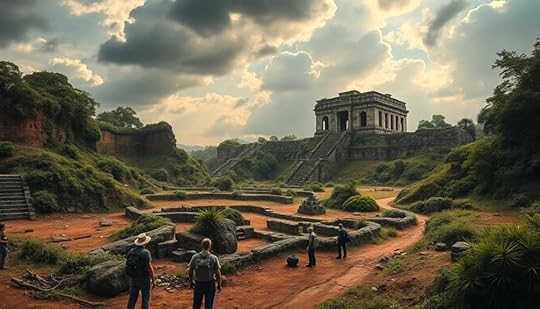
As researchers explore deeper into the mysteries of ancient monster cities, they're uncovering exciting possibilities for future discoveries. The use of advanced technology and interdisciplinary approaches is set to revolutionize our understanding of archaeological sites.
Here are some promising directions for future research:
Hidden urban complexes: LIDAR technology could reveal extensive settlements beneath known sites, like those found at Angkor.Maya mega-cities: Ongoing excavations at Tikal may shed light on pre-Columbian urbanization and societal structures.Ground-penetrating radar (GPR): This technique at Pompeii and Petra could uncover unknown structures and the interconnectedness of ancient cities.Great Wall of China: Investigating its remnants might provide insights into the logistics and organization of ancient Chinese cities, including their size and population.Climate adaptation studies: Combining archaeology with remote sensing can help us understand how ancient cities managed resources and adapted to climate changes, offering lessons for modern urban planning.These avenues promise not just to expand our knowledge of ancient civilizations but also to inform contemporary urban development.
Future discoveries could redefine our perception of ancient monster cities and their significance in human history.
ConclusionAs you wander through the ruins of ancient monster cities, imagine the echoes of laughter and the whispers of dreams that once filled the air. Each stone tells a story, a proof of human resilience and ingenuity. Just like a phoenix rising from the ashes, these archaeological sites hold secrets waiting to be uncovered. They remind you that even in decline, the spirit of a civilization can inspire future generations to dream bigger, build bolder, and cherish their legacy.
Enter Sleepy Hollow: A Modern Tour of the Legend’s Birthplace
When you enter Sleepy Hollow, you're stepping into the birthplace of Washington Irving's legendary tale. Explore Philipsburg Manor, with its intriguing history and beautiful grounds, then snap a photo by the iconic Headless Horseman sculpture. Don't miss the enchanting Headless Horseman Bridge, where you can feel the thrill of Ichabod Crane's chase. Visit the Old Dutch Church and wander through Sleepy Hollow Cemetery, where Irving rests. With seasonal events adding to the charm, there's so much more waiting to be uncovered around every corner that brings history and legend alive.
Key TakeawaysExplore historic sites like Philipsburg Manor and the Old Dutch Church, showcasing colonial architecture and connections to Washington Irving's work.Visit the iconic Headless Horseman Sculpture, a popular photo spot that captures the essence of Irving's "The Legend of Sleepy Hollow."Walk the scenic Headless Horseman Bridge, where visitors can enjoy views and learn about the chase scene from Irving's tale.Discover Sleepy Hollow Cemetery, the resting place of notable figures, including Washington Irving, with scenic landscapes for exploration.Experience seasonal events in October, featuring Halloween-themed activities, tours, and community parades celebrating the legend and local heritage.Historical Significance of Sleepy HollowWhen you think of Sleepy Hollow, you might picture the eerie tales spun by Washington Irving, but its historical significance runs much deeper. This enchanting area was originally inhabited by Native Americans before Dutch settlers established a peaceful community, possibly naming it after the Dutch term for "quiet harbor."
The Old Dutch Church, built around 1685, stands as one of the oldest churches in America, showcasing early colonial architecture and serving as an essential part of local worship.
Sleepy Hollow Cemetery, founded in 1849, is another key historical landmark. It's the final resting place of notable figures, including Washington Irving himself and various Revolutionary War veterans. The cemetery's beauty and historical importance draw visitors who seek to connect with the past.
The haunted reputation of Sleepy Hollow, stemming from local lore and ghost stories dating back to the 1600s, adds to its charm. Irving's "The Legend of Sleepy Hollow" not only popularized the area but also intertwined its rich history with enchanting folklore.
Exploring Philipsburg Manor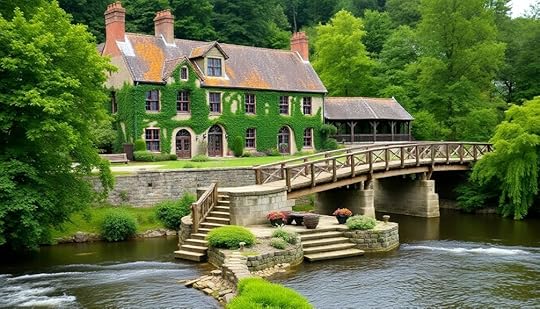
Nestled in the heart of Sleepy Hollow, Philipsburg Manor offers a fascinating glimpse into 18th-century life. This historic site from the 1700s features a restored manor house and an active gristmill, transporting you back to the era of Washington Irving. You can join guided tours that detail the significance of the manor in relation to "The Legend of Sleepy Hollow," making it a must-visit in the Hudson Valley.
While you're there, be sure to explore the grounds, where seasonal decorations enhance the experience. Philipsburg Manor also provides a variety of family-friendly activities, including games on the lawn and a special exhibit dedicated to Irving's timeless tale. Admission is accessible, ranging from free to $12, so everyone can enjoy this historic gem.
Here's a quick overview of what you can expect:
FeatureDetailsLocation381 N Broadway, Sleepy Hollow, NYAdmissionFree to $12ActivitiesFamily-friendly games, exhibitsGuided ToursAvailable seasonallyHistoric SignificanceTies to Washington Irving's workMake sure to check the hours before your visit!
The Headless Horseman Sculpture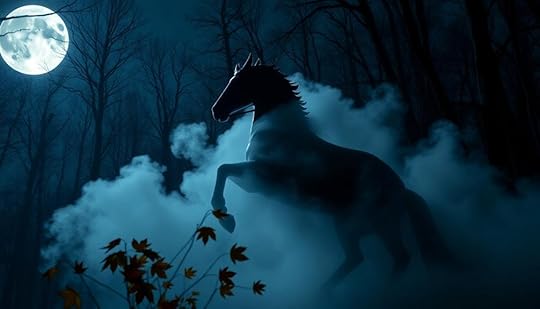
Standing just 300 feet from Philipsburg Manor, the Headless Horseman Sculpture is an iconic landmark that captures the imagination of visitors. This striking metal statue vividly depicts the Headless Horseman chasing Ichabod Crane, bringing to life the famous characters from Washington Irving's tale.
It's an unmissable photo op for anyone exploring the area, so be sure to grab a snapshot to remember your visit. You can easily access the sculpture with a short walk or a drive of less than ten minutes from the Sleepy Hollow Hotel. This makes it a convenient stop in your adventure.
The sculpture serves as a starting point for a self-guided tour, allowing you to explore deeper into the rich history surrounding the legend. As you wander, you'll encounter other historical sites that connect to Irving's story, enhancing your appreciation of this classic tale.
The Headless Horseman Sculpture stands as a significant landmark in Sleepy Hollow, capturing the essence of the legend and inviting you to immerse yourself in the enthralling world of Irving's narrative.
Don't miss this chance to connect with the lore of Sleepy Hollow!
Discovering the Headless Horseman Bridge
As you approach the Headless Horseman Bridge, you'll feel the weight of its historical significance in Irving's tale.
This modern structure not only marks the iconic setting but also offers stunning views perfect for photography.
Take a moment to capture the essence of Sleepy Hollow and reflect on the legendary story that inspired it.
Bridge's Historical SignificanceDiscovering the Headless Horseman Bridge invites you to step into the heart of Washington Irving's legendary tale. This modern structure replaces the original wooden bridge, marking the approximate location of the iconic chase scene between Ichabod Crane and the Headless Horseman.
The bridge holds significant historical value, as it connects visitors to the rich lore of Sleepy Hollow.
Here are three reasons to appreciate the bridge's historical significance:
Cultural Connection: A nearby sign commemorates the bridge's link to Irving's story, reminding you of the area's literary heritage.Proximity to Historic Sites: Located near the Old Dutch Church, the bridge enhances the historical atmosphere, providing a tangible connection to the past.Reflection and Photography: Although the original bridge is gone, this site remains a popular spot for reflection on the themes of legend and lore, as well as a beautiful backdrop for photos.As you stand on the Headless Horseman Bridge, you're not just crossing a modern structure; you're walking through a piece of history that breathes life into the enchanting tales of Sleepy Hollow.
Scenic Photography OpportunitiesCapturing the essence of Sleepy Hollow becomes effortless at the Headless Horseman Bridge, where the blend of history and scenery creates a perfect backdrop for photography. Though the original wooden bridge from Washington Irving's tale is gone, the modern version stands proudly, inviting you to snap stunning shots. Located near the Old Dutch Church, the area is rich in lush greenery, offering picturesque landscapes that enhance your photography experience.
Photography TipsBest Times to VisitExplore different anglesEarly morning for soft lightCapture reflections in waterLate afternoon for golden hourInclude surrounding foliageAutumn for vibrant colorsAs you stroll from Philipsburg Manor to the bridge, you'll discover various scenic views that beckon for your camera. The combination of the bridge's historical significance and the enchanting landscape makes it an ideal spot for photography enthusiasts. Take a moment to reflect on the legend while creating memories through your lens, embracing the allure of Sleepy Hollow.
Visiting the Old Dutch Church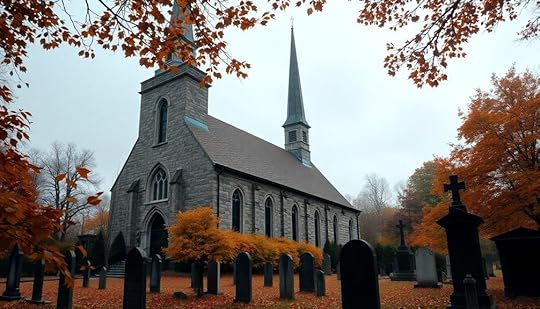
When you visit the Old Dutch Church, you step into a piece of American history dating back to 1685.
Its stunning colonial architecture, featuring stone and brick from Holland, reflects the craftsmanship of the time.
As you explore the grounds, you'll encounter the resting places of Revolutionary War veterans and local legends, adding layers to your experience.
Historical Significance of ChurchThe Old Dutch Church stands as a remarkable tribute to the early colonial history of America, having been established around 1685.
As one of the oldest churches in the nation, it showcases a mix of stone and brick, reflecting the craftsmanship of the time. Its historical significance extends beyond architecture, deeply intertwined with local lore.
When you visit, be sure to check out these three features:
Burying Ground: The church's burying ground contains tombstones with Dutch inscriptions, offering a glimpse into the lives of past generations and the area's rich heritage.Washington Irving Connection: This church plays a pivotal role in Irving's "The Legend of Sleepy Hollow," where Ichabod Crane encounters the infamous Headless Horseman, adding a literary touch to your visit.Visitor Resources: Don't miss the available booklet that explores deeper into the church's historical importance and its links to local legends.Planning your visit before 4:30 PM guarantees you can fully appreciate the serene atmosphere and the historical significance that the Old Dutch Church embodies.
Architectural Features and DesignExploring the architectural features of the Old Dutch Church reveals an enchanting blend of early colonial design and local craftsmanship. Established around 1685, this historic structure features a striking combination of stone and brick, showcasing the building styles brought over from Holland.
As you stroll the grounds, don't miss the historic burying ground, where Revolutionary War veterans and other notable figures rest, underscoring the church's historical significance in Sleepy Hollow.
Above the church's porch, an inscription honors founders Frederick Filipsen and Katrina Van Courtlandt, marking their essential role in the local community's heritage. The serene location near the Pocantico River enhances the church's beauty, with mature locust trees and elms creating a peaceful atmosphere ideal for reflection.
As you visit, consider exploring the informative booklet available, which offers valuable insights into the Old Dutch Church's context and significance. You'll find connections to Washington Irving's tales woven into the fabric of this iconic landmark.
The architectural features and design not only tell a story of the past but also invite you to reflect on the community's rich history.
Sleepy Hollow Cemetery Highlights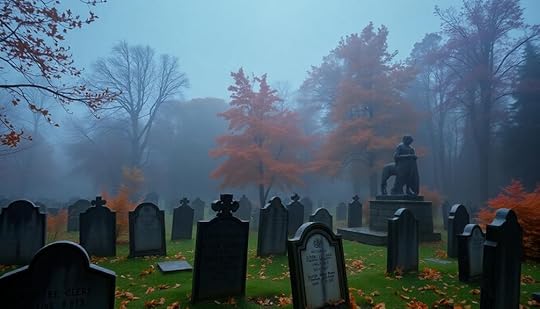
Sleepy Hollow Cemetery is a treasure trove of history, featuring the final resting places of iconic figures like Washington Irving, Andrew Carnegie, and Walter Chrysler. This cemetery, established in 1849, offers not only a glimpse into the lives of these notable figures but also a serene atmosphere enriched by local wildlife.
Here are three highlights you won't want to miss:
Washington Irving's Grave: Located within the cemetery, Irving's modest grave is marked by an iron gate. It's a must-see for anyone interested in his literary contributions and the historical significance he holds in American literature.Old Dutch Church: Adjacent to the cemetery, the Old Dutch Church dates back to 1685. This historic landmark enhances the cemetery's charm and serves as a poignant reminder of the area's deep-rooted history.Scenic Beauty: As you stroll through Sleepy Hollow Cemetery, you'll be captivated by its striking landscapes, which perfectly blend tranquility and an eerie sense of the past.Open daily, the cemetery invites you to explore its rich history from 8:00 AM to 4:30 PM on weekdays, and 8:30 AM to 4:30 PM on weekends.
Seasonal Events and Festivals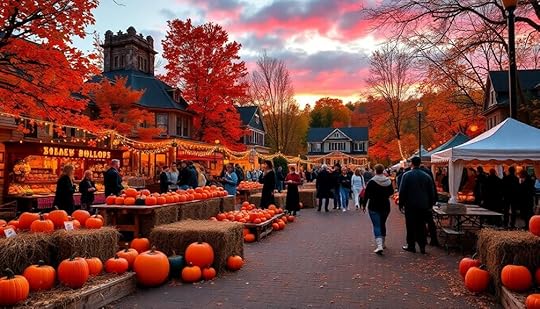
October brings a lively atmosphere to the area, as seasonal events and festivals kick off in full swing. Sleepy Hollow transforms into a Halloween wonderland, drawing crowds enthusiastic to experience its rich lore.
You can explore family-friendly activities, tours, and games at the Octagon House and Philipsburg Manor, where admission fees range from free to $12. Don't miss the special exhibit on "The Legend of Sleepy Hollow," showcasing fascinating insights into the tale that made this place famous, along with a screening of an original shadow puppet short film.
As the month progresses, you'll find a variety of Halloween festivities lined up. Haunted hayrides promise spine-chilling fun, while the blazing pumpkins display offers a stunning visual treat.
If you're feeling adventurous, join in the costumed 10K run event for a unique way to celebrate the season. Community spirit shines through during the Halloween parade, inviting everyone—residents and visitors alike—to take part in the festive cheer.
With so much happening, Sleepy Hollow in October is a must-visit destination for anyone looking to immerse themselves in the spirit of Halloween and the legend that started it all.
Local Attractions and Activities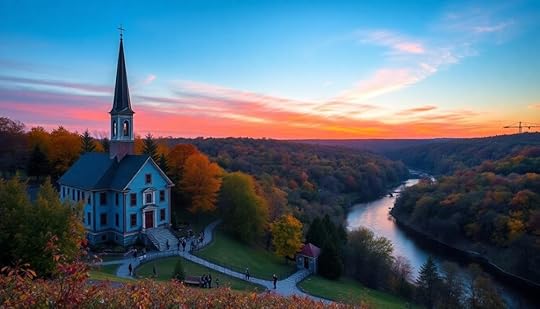
Nestled along the scenic Hudson River, local attractions in Sleepy Hollow offer a rich blend of history and culture that's perfect for all ages.
As you explore Sleepy Hollow Country, you'll discover fascinating sites that bring Washington Irving's stories to life, much like the Hopi Tribe's preservation of ancestral knowledge through generations.
Here are three must-visit attractions:
Philipsburg Manor: Step back in time at this historic site from the 1700s. Guided tours reveal the lives of Dutch, African, and Native American communities, along with special exhibits related to "The Legend of Sleepy Hollow."Old Dutch Church and Burying Ground: Established around 1685, this iconic church features a booklet for visitors to learn about its historical significance, including the resting place of key figures from Irving's tale.Headless Horseman Sculpture: Just 300 feet from Philipsburg Manor, this popular photo spot captures the essence of Irving's famous character and makes for a memorable snapshot.With scenic walking routes connecting these attractions, along with farmers markets, live music events, and hiking trails along the Hudson River, Sleepy Hollow offers a delightful array of activities for everyone.
Tips for Planning Your Visit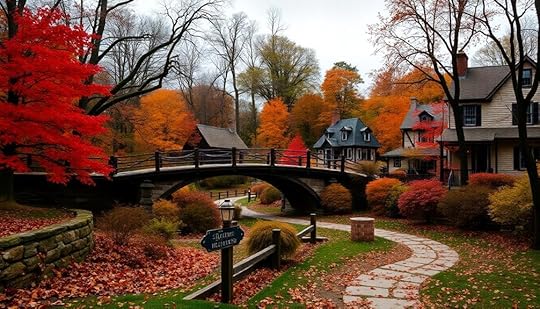
When planning your visit to Sleepy Hollow, it's a good idea to map out your itinerary ahead of time to make the most of your experience. Aim to visit on September 16, 2022, between 10:00 am and 4:30 pm to take advantage of family-friendly activities and explore Philipsburg Manor, which offers admission fees ranging from free to $12.
Consider joining a guided tour that highlights key landmarks from Washington Irving's "The Legend of Sleepy Hollow." These tours are available Fridays through Sundays and on special holidays like Columbus Day and Halloween.
Arriving early is essential to secure parking at the designated overflow lot at 100 Continental St. Parking is free, safe, and secure, ensuring your visit starts off smoothly.
Keep in mind that the tour involves traversing steep and uneven terrain, making it suitable for ages 10 and older.
Finally, always check local weather forecasts before your visit; events may be canceled due to extreme weather conditions, so stay updated via the website or local radio announcements.
Planning ahead will help you enjoy all Sleepy Hollow has to offer!
Personal Reflections on Sleepy Hollow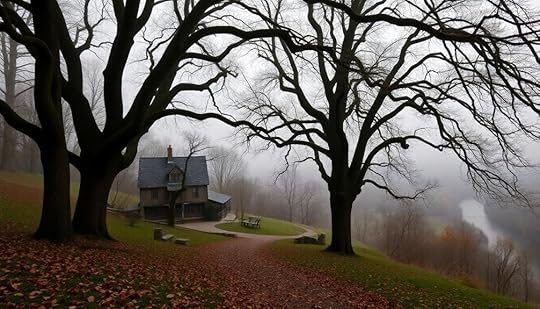
As you stroll through Sleepy Hollow, nostalgia for its tranquil landscapes and deep connections to Washington Irving's stories may wash over you. This enchanting place holds a unique charm, where the echoes of the past blend seamlessly with the present.
You might also reflect on the importance of cultural preservation, much like the efforts seen in the Center for Aboriginal Health, which promotes awareness of traditional practices. Here are a few reflections you might experience:
Old Dutch Church: Visiting the historic church and its adjacent burying ground, you can't help but feel a connection to generations past, including Irving himself. Each gravestone tells a story, deepening your appreciation for the area's history.Pocantico River: The scenic beauty of the Pocantico River valley captivates your senses. You may find yourself longing for the simplicity and traditions of rural life that Irving beautifully captured in his narratives.Modern Changes: While you embrace the area's charm, you might also sense a bittersweet recognition of how modernization has altered Sleepy Hollow. The youthful magic once felt here may have faded, but the spirit of Irving's tales lingers, reminding you of the importance of preserving the past amid the inevitable changes.Frequently Asked QuestionsIs It Worth Visiting Sleepy Hollow, NY?Absolutely, it's worth visiting Sleepy Hollow, NY! You'll immerse yourself in rich history, explore scenic landscapes, and enjoy seasonal events. Plus, the literary connection adds a unique charm that makes your trip unforgettable.
How Many Days to Visit Sleepy Hollow, NY?You'll find one day's enough for key sights, but if you want to soak in the local culture and seasonal events, plan for two or three days. Enjoy the beautiful surroundings and rich history!
Where Is the Real Sleepy Hollow of Legend and Do People Hear Horses' Hooves There Today?You'll find the real Sleepy Hollow in Westchester County, New York. Many visitors report hearing distant horse hooves, especially during Halloween, adding a chilling touch to this legendary locale's already enchanting atmosphere.
Is Sleepy Hollow Walkable?Yes, Sleepy Hollow is walkable! You can easily explore its attractions on foot, including Philipsburg Manor and the Headless Horseman Sculpture. Just be prepared for some uneven terrain in certain areas during your adventure.
ConclusionAs you wrap up your journey through Sleepy Hollow, you'll carry the magic of its history and legends with you. Imagine strolling through the picturesque streets during the annual Headless Horseman Halloween Festival, where the air buzzes with excitement and the spirit of Ichabod Crane comes alive. This enchanting place offers a blend of history and fun, making it a perfect spot for families and friends to create unforgettable memories together. Don't miss it!
November 23, 2024
What if Different Monster Species Are Locked in a War
If different monster species are locked in a war, the consequences could be severe. Their unique traits would determine combat roles, while historical rivalries might further fuel aggression. In this chaos, alliances could form against common enemies, and some monsters might even redirect their aggression towards humans, viewing them as pests. You'll see technological advances emerge to enhance warfare, but long-term ecological effects could threaten biodiversity. As societies evolve, you'll witness shifts in values and survival strategies. There's much more to uncover about how these dynamics play out in the domains of conflict and cooperation.
Key TakeawaysOngoing conflict among monster species leads to habitat destruction, causing ecological imbalance and threatening biodiversity.Temporary alliances may form against common threats, despite historical rivalries, altering traditional combat dynamics.Advanced technologies emerge, integrating biological traits with weaponry to enhance combat effectiveness and defense strategies.Societal restructuring occurs post-conflict, resulting in increased xenophobia and competitive values among species that complicate future cooperation.Communication technologies improve interspecies collaboration, reducing misunderstandings and fostering conflict resolution amidst warfare.Species Characteristics and Philosophies
What makes each monster species unique in the context of war? Each species possesses distinct characteristics that shape their roles in conflict. Some might've incredible strength, while others could be agile or wield elemental abilities, allowing them to approach warfare in various ways. These species characteristics often dictate their combat strategies and effectiveness on the battlefield.
Philosophies surrounding territory and survival also play a vital role. While some species may prioritize dominance and aggression, others focus on coexistence and balance. This divergence influences their interactions, leading to potential alliances or fierce rivalries.
Communication and social structures within each species further determine how they engage in conflicts, whether they fight together or alone. Territorial disputes, often rooted in historical rivalries, can fuel these ongoing conflicts, leading to animosities that persist over generations.
Such disputes not only affect the species involved but also have broader ecological consequences, destabilizing local ecosystems and threatening biodiversity. Understanding these unique characteristics and philosophies allows you to appreciate the complexity of monster species war and the intricate dynamics at play.
Reactions to Human ConflictAs monster species navigate their own wars, the emergence of human conflict complicates their dynamics. Next time you observe a skirmish, remember that humans might be perceived as an external threat, prompting alliances among monster factions. They've seen how human actions disrupt their ecosystems, and this could escalate tensions. Monsters may decide that eliminating human influence is essential to restore their natural order.
In many folklore tales, the impact of cryptid sightings on local cultures illustrates how these creatures perceive human activities as disruptive forces.
In the first place, some monsters might redirect their aggression towards human populations, viewing them as invasive pests that need control. This perception could lead to increased hostility and attacks against human settlements.
Meanwhile, other factions may see an opportunity to exploit the chaos, using the distraction of human conflict to further their territorial ambitions.
The presence of humans can inadvertently shift the balance among monster species, causing unpredictable alliances and rivalries. As these factions react, their strategies will vary; some will mobilize for defense against human incursions, while others might seize the moment to strengthen their positions.
Ultimately, the interplay between monster wars and human conflict creates a volatile environment, where each decision can have far-reaching consequences.
Unexpected Responses to Threats
How do monster species react when faced with threats in the midst of their own conflicts? You might be surprised to learn that they often exhibit unexpected responses. For instance, some monsters can't understand why they would ally with a rival species, yet they've seen the dire consequences of neglecting a common enemy. This leads to temporary alliances, showcasing adaptability.
Additionally, rather than resorting to brute force, certain species leverage their environmental knowledge. They create traps or distractions, demonstrating their evolutionary prowess. Here's a quick look at some responses:
Response TypeDescriptionExample SpeciesTemporary AlliancesJoining forces against a shared threatGoblins & TrollsNon-Aggressive TacticsUtilizing traps or distractions instead of attacksFairies & SpritesUnusual RetreatsChoosing to flee or hide instead of fightingDragons & GiantsCultural ShiftsNew rituals to address violenceWerewolves & VampiresHarnessing TechnologyUtilizing ancient remnants for strategic advantageVarious SpeciesThese strategies reveal how monster species adapt, often prioritizing survival over instinctual competition in times of crisis.
Technological Approaches to Warfare
In the ongoing conflicts between monster species, you'll witness the emergence of advanced weaponry tailored to their unique strengths.
Non-aggressive defense strategies also play an essential role, allowing species to protect themselves without escalating violence.
Plus, inter-species communication technologies are critical in coordinating attacks and sharing important intelligence, making them key players in the war landscape.
Advanced Weaponry DevelopmentAdvanced weaponry development among monster species represents a fusion of nature and technology, where unique biological traits are harnessed to create innovative combat solutions.
For instance, some species might tap into the explosive properties of their materials, crafting powerful projectiles or traps that devastate foes. Imagine wielding weapons that mimic the fire-breathing capability of Rathalos, releasing elemental attacks that elevate your combat effectiveness in warfare.
Hybrid weaponry could emerge as another game-changer, combining traditional armaments with biological components harvested from monsters. This approach not only enhances offensive capabilities but also strengthens defensive measures during conflicts.
By studying the neurology and behavior patterns of rival species, you'd be able to develop targeted weapons that exploit their weaknesses, providing a strategic advantage.
Collaboration between different species may arise in the quest for advanced weaponry. As common threats loom, the urgency for survival could drive alliances, fostering an environment where technological innovations and resources are shared.
Such cooperation could revolutionize warfare strategies, making each species more formidable on the battlefield. In this war, the future of monster weaponry lies in the creative integration of biology and technology.
Non-Aggressive Defense StrategiesAs the battlefield evolves with advanced weaponry, many monster species are recognizing the significance of non-aggressive defense strategies. Instead of direct confrontation, species with high technological capabilities are focusing on pacifying aggressive behaviors through methods like electrical and magnetic stimulation, which parallels how AI enhances threat detection in cybersecurity. This approach minimizes harm while addressing the root causes of conflict.
Drones and automated systems are becoming essential tools for monitoring potential clashes before they escalate. By deploying these non-destructive methods, you can create a safer environment where tensions can be diffused.
Additionally, utilizing behavioral analysis technology allows you to explore the neurology and social structures of rival species, leading to tailored interventions that promote de-escalation.
Long-term strategies, such as environmental manipulation, also play a significant role. By creating barriers or altering habitats, you can effectively lessen encounters between competing species, fostering a sense of peace.
These non-aggressive strategies not only protect your own kind but also pave the way for potential alliances. By prioritizing understanding and cooperation over conflict, you contribute to a more harmonious coexistence in a world where monsters can thrive without war.
Inter-Species Communication TechnologiesHarnessing inter-species communication technologies can transform the landscape of monster warfare.
By employing advanced neural interfacing, you can translate intentions and emotions between different species. This reduces misunderstandings that often escalate into conflict.
Here are some key technologies that could change the game:
Sound Wave Modulation: Create universal communication signals to promote peaceful interactions.Holographic Displays: Share complex information visually, conveying warnings or intentions without needing words.Biofeedback Systems: Monitor emotional responses during encounters to gauge temperament and adjust your approach.Artificial Intelligence Integration: Enhance real-time translation of various languages, fostering cooperation and strategic alliances.Emotion Recognition Technology: Use sensors to interpret emotional states, allowing for timely interventions before tensions rise.Long-term Consequences of Conflict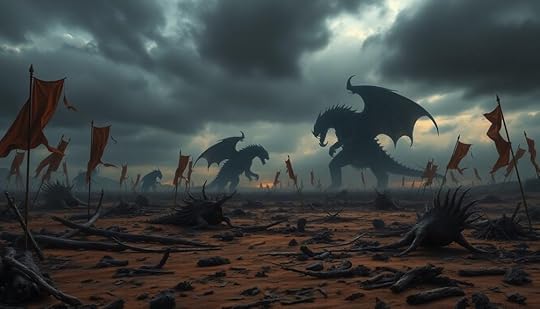
As you consider the aftermath of monster species conflicts, you'll notice how societal structures can shift dramatically, fostering distrust and xenophobia.
This chaos doesn't just affect social dynamics; it throws ecosystems into disarray, jeopardizing food chains and habitats.
If left unchecked, these long-term consequences could spell disaster for both the monsters and their environments.
Societal Restructuring Post-ConflictSocietal restructuring following conflict among monster species often leads to profound cultural shifts that reshape social dynamics and relationships. As you navigate this new landscape, you'll notice how the impacts of war can alter everything from governance to daily interactions.
The experiences of conflict foster xenophobia, creating long-standing distrust towards other species. You might see a rise in militarization, with societies investing heavily in technology and defenses. This emphasis on aggression can shift values, making competition a focal point for survival.
Moreover, the trauma of loss leads to changes in cultural practices, often promoting remembrance rituals that highlight the fragility of life. In addition, the breakdown of ecosystem stability demands new forms of governance. This can compel species to reevaluate their ethical frameworks, focusing on collective survival.
Key changes you might observe include:
Increased focus on defensive technologiesHeightened xenophobia and reluctance to allyEmergence of remembrance practicesNew cooperative governance structuresShift toward competitive societal valuesThese transformations create a complex web of interactions that redefine how different monster species coexist in a post-conflict world.
Ecosystem Imbalance and ChaosIn the aftermath of prolonged conflict, ecosystems struggle to regain balance, often descending into chaos. The ongoing war between monster species disrupts habitats, leading to the overpopulation of some species while others face extinction. This imbalance destabilizes food chains, creating a ripple effect throughout the environment.
With predator species decimated by conflict, prey populations surge unchecked, leading to further ecological strain and potential famine. Habitat destruction exacerbates the loss of biodiversity, crippling essential environmental services like pollination and water purification. The result? A fragile system teetering on the brink of collapse.
As the cycle of warfare continues, the degradation escalates, triggering soil erosion, desertification, and diminishing arable land, which impacts all life forms reliant on these ecosystems. Recovery becomes nearly impossible as ecosystems grapple with ongoing battles. The chaos inhibits regeneration, pushing the environment closer to disarray.
Without intervention, the long-term consequences of this conflict could render once-thriving habitats uninhabitable, wiping out not just the monster species involved, but countless other organisms that share their world. The aftermath of war, consequently, isn't just a battle lost or won; it's a landscape forever altered.
Xenophobia Towards Other SpeciesXenophobia breeds in the shadows of conflict, where surviving monster species begin to see each other as threats rather than potential allies. As fear takes hold, isolationist attitudes flourish.
You might notice a shift in how different species interact; instead of collaboration, hostility prevails.
This fear can create an environment where:
Preemptive strikes become the norm, with species attacking before being attacked.Cultural narratives evolve, painting other species as inherently violent or corrupt.Negative stereotypes are reinforced, justifying aggressive postures and actions.Alliances form among similar species, fostering factions that seek dominance over others.Original values of coexistence fade, replaced by a society driven by militarization and fear.Over time, this deep-seated xenophobia can lead to societal decay. Rather than thriving together, species become trapped in a cycle of aggression and distrust.
It's a grim reality where potential allies are seen as enemies, making the dream of coexistence seem more distant than ever. You can see how xenophobia not only affects individual species but also the broader ecosystem, as collaboration gives way to conflict and division.
Survival Strategies in War
War between monster species often requires innovative survival strategies to navigate the chaos and threats that arise. You might find that forming alliances with other species can be essential. By banding together, you can share resources and offer mutual protection against common enemies. It's a matter of survival, and collaboration often yields greater combat effectiveness.
Utilizing your environment strategically can also give you the upper hand. Seek out natural cover, set traps, and create ambush points to outmaneuver stronger foes. If you're weaker, these tactics might be your best chance at survival. Additionally, developing specialized combat skills, such as poison extraction or elemental attacks, can provide a tactical advantage during conflicts.
Establishing communication methods, even if basic, enhances coordination among allies. This allows for better planning and execution of survival tactics.
Evolution of Monster Societies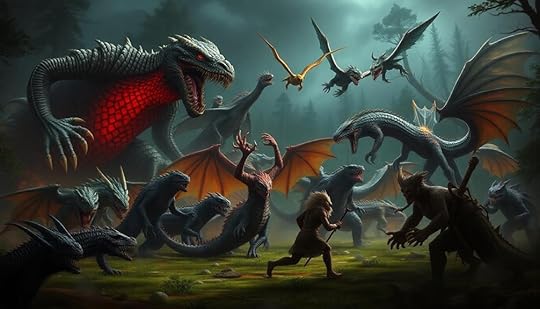
As monster species adapt to the chaos of conflict, their societies evolve in fascinating ways. Each species develops unique social structures, influenced by ongoing battles and resource scarcity. Some monsters form packs or clans based on territorial dominance, while others choose independence or loose alliances for survival. The constant pressure of war leads to remarkable adaptations, altering their way of life.
You'll notice several intriguing changes in these societies:
Enhanced Defense Mechanisms: Monsters develop stronger armor or more potent camouflage to survive attacks.Advanced Hunting Strategies: New tactics emerge as species learn to outsmart rivals.Migration Patterns: Resource scarcity drives monsters to seek new habitats or alter feeding habits.Hybrid Species: Crossbreeding leads to new abilities and traits, complicating social hierarchies.Cultural Practices: Rituals and communication evolve, helping monsters establish identity and assert dominance.These adaptations shape not only how monsters interact but also the ecological balance of their environments. By understanding these shifts, you gain insight into the complexities of monster societies locked in an ongoing struggle for survival.
ConclusionIn a world where monstrous species clash like titans, every roar and growl echoes the pain of lost lives and fractured dreams. You can almost feel the ground tremble as alliances crumble and ancient rivalries ignite. The chaos spins out of control, leaving destruction in its wake, while survival becomes a desperate dance of cunning and brute strength. If these creatures can't find peace, what hope is there for us? The weight of their war might just crush us all.
Estes Park: Colorado’s Haunted Getaway in the Heart of the Rockies
Estes Park is your ultimate haunted getaway nestled in the stunning Rockies. You'll encounter ghostly tales at iconic spots like the Stanley Hotel, known for its eerie room 217 and mysterious children's laughter. Explore the Seven Keys Lodge, where folklore and chilling encounters await. Enjoy guided walking tours that share spine-tingling stories while you soak in the scenic beauty. Thrilling escape rooms and interactive performances like Aiden Sinclair's The Underground add to the excitement. Each location is steeped in history and mystery, inviting you to uncover these spooky secrets. There's so much more to discover about this haunted haven.
Key TakeawaysEstes Park is renowned for its stunning Rocky Mountain scenery and vibrant community, making it a prime destination for visitors.The Stanley Hotel, famous for its ghostly lore, inspired Stephen King's "The Shining" and is a key attraction for paranormal enthusiasts.Guided ghost tours offer insights into Estes Park's haunted history, featuring locations like the Stanley Hotel and Historic Park Theatre.Unique supernatural performances by Aiden Sinclair engage audiences with local ghost stories and interactive magic shows for a thrilling experience.Seasonal events, including spooky film screenings and local candy shop treats, enhance the town's haunted allure during Halloween.The Allure of Estes ParkEstes Park's enchanting atmosphere draws you in with its stunning mountain scenery and captivating history. As you stroll through this charming town, you can't help but feel the pull of its haunted past. The iconic Stanley Hotel stands at the heart of it all, famously known for its chilling ghost stories. You might even join one of the popular ghost tours that reveal the eerie legends surrounding this historic landmark.
Curiously, the phenomenon of sonoluminescence mirrors the mysterious allure of Estes Park, as it captivates scientists with its unexplained bursts of light, much like the town's ghostly tales.
As you explore, local folklore adds a layer of mystery, from the haunting tales of the Blue Mist to whispered secrets about other establishments. Each corner of Estes Park seems to tell a story, inviting you to explore deeper into its rich history.
The vibrant community embraces its spooky side, hosting seasonal events that keep the spirit of Halloween alive year-round. Picture yourself enjoying spooky film screenings or wandering through the historic Park Theatre, renowned for its ghostly reputation.
With candy shops dotting the streets, you can indulge in sweet treats while soaking in the festive atmosphere. Estes Park offers a unique blend of nature, history, and the supernatural, making it an irresistible getaway for thrill-seekers and history buffs alike.
Seven Keys Lodge History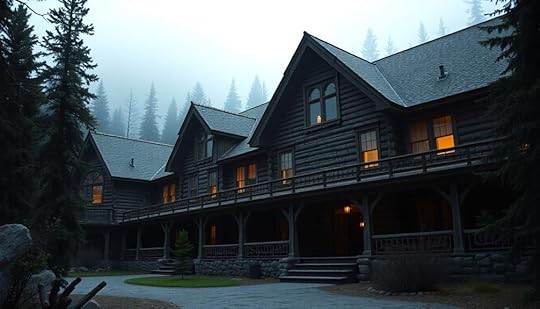
Nestled in the heart of Estes Park, Seven Keys Lodge has a rich history that dates back to its founding in 1900 as Baldpate Inn by Gordon and Ethel Mace during their honeymoon. This haunted hotel soon became a favorite among visitors, who contributed to its unique history by bringing their own keys.
Over the years, these keys formed a diverse collection displayed proudly in the bar area, rumored to attract the spirits of the original owners.
The lodge is renowned for its ghost stories and haunting experiences, drawing those fascinated by the supernatural. Guests often share spine-tingling tales of eerie encounters, and many believe they've felt the presence of Gordon and Ethel wandering the halls.
Each key in the collection tells a story, connecting past guests to the lodge's lore, making it an enchanting spot for anyone seeking local folklore.
As you explore Seven Keys Lodge, you'll find yourself immersed in its blend of history and mystery, where the whispers of the past linger and the allure of the unknown beckons.
Whether you're a skeptic or a believer, the tales and ambiance will leave a lasting impression.
The Legend of the Blue Mist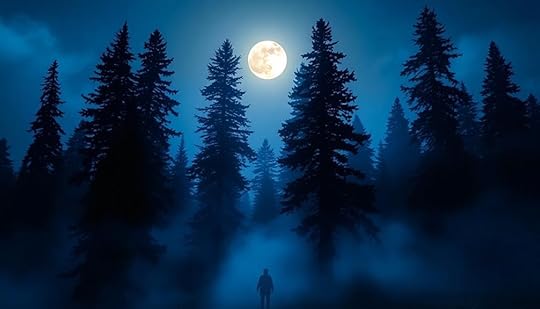
As you wander through the haunted history of Seven Keys Lodge, you'll encounter another spine-chilling tale that adds to the mystique of the area: the Legend of the Blue Mist.
This legend revolves around Miner Bill, who arrived in Estes Park in 1883 after spending time in an asylum. He claimed to have spotted a mysterious entity enveloped in a blue mist, which left behind three-toed claw marks—an eerie detail that has fascinated both visitors and locals alike.
The legend intensified when animals were found mysteriously reduced to mere bones, amplifying the unsettling atmosphere surrounding Estes Park. Tragically, Miner Bill was discovered dead, surrounded by three-toed tracks, weaving a haunting twist into this already chilling story.
As a visitor to these haunted hotels, you can feel the spiritual energy that lingers in the air, drawing you into the tales of the past.
The Legend of the Blue Mist remains a gripping piece of folklore, inviting you to explore the unknown as you uncover the secrets that have shaped this enchanting region.
Explore the Stanley Hotel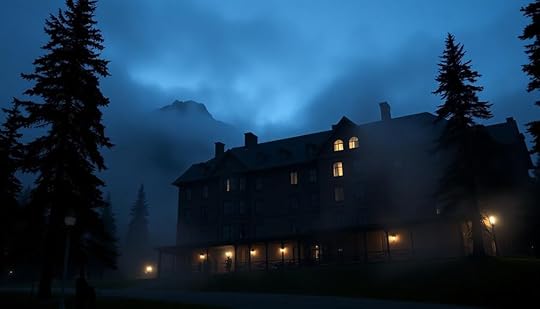
At the Stanley Hotel, you'll uncover a rich history steeped in haunting tales and ghostly experiences.
From the eerie laughter heard in Room 217 to the inspiration it provided for Stephen King's "The Shining," every corner of this iconic hotel whispers stories of the supernatural.
Join a ghost tour to explore the chilling encounters that have made the Stanley a must-visit for thrill-seekers and paranormal enthusiasts alike.
Haunted Hotel HistoryThe Stanley Hotel, which opened its doors on July 4, 1909, has become a cornerstone of haunted history in Estes Park, Colorado. When F.O. Stanley purchased the property to seek relief from tuberculosis, he created a luxurious destination that would eventually attract ghost hunters and thrill-seekers alike.
Often dubbed "Disneyland for ghosts," the hotel boasts numerous reports of ghost sightings and unexplained phenomena.
Among the most notorious haunted spots is Room 217, where the spirit of head housekeeper Elizabeth Wilson is said to linger. Guests frequently report strange occurrences and eerie sensations in this room.
The Fourth Floor is another hotspot for supernatural activity, with visitors often hearing the haunting sounds of children's laughter and footsteps echoing through the halls.
The hotel's chilling ambiance served as inspiration for Stephen King's "The Shining," penned after his stay in 1974. This connection revitalized interest in the Stanley Hotel's ghostly lore, solidifying its status as one of America's most haunted hotels.
Whether you're intrigued by the paranormal or just curious, the Stanley Hotel invites you to explore its fascinating haunted history.
Ghostly Experiences AwaitExploring the Stanley Hotel offers an unforgettable encounter with the supernatural, where every corner holds a whisper of the past. Known for its haunted reputation, nearly half of the guests come seeking ghostly experiences, and many leave with chilling stories of their own.
As you wander through the hotel, keep an eye out for:
Room 217: The infamous space associated with head housekeeper Elizabeth Wilson, where guests have reported strange occurrences.The Fourth Floor: Listen closely for the laughter of children and be wary of moving furniture that seems to have a life of its own.Nightly Ghost Tours: Join a guided exploration of the hotel's eerie history and learn about its many hauntings.Whether you're ghost hunting or simply curious, the Stanley Hotel is a hotspot for paranormal activity.
Visitors often recount sightings of full-body apparitions, shadowy figures, and unexplained sounds, solidifying its status as one of the most haunted places in America.
If you're brave enough, this iconic hotel will immerse you in its spine-tingling lore and leave you with memories that linger long after your stay.
Stephen King's InspirationWith its haunting atmosphere and storied past, the Stanley Hotel served as the perfect backdrop for Stephen King's inspiration while writing "The Shining." After staying in Room 217 in October 1974, King was captivated by the hotel's eerie charm, which ignited vivid nightmares that ultimately shaped his iconic tale of isolation and madness.
The themes of horror and psychological tension he explored in the novel resonate deeply with the hotel's unique ambiance.
Over 350 million copies of Stephen King's The Shining have been sold, considerably boosting the Stanley Hotel's popularity and cultural significance. The hotel's connection to the story is undeniable, especially when you consider Stanley Kubrick's 1980 adaptation, which controversially changed Room 217 to Room 237—much to King's disapproval.
In 1996, King took matters into his own hands, producing a mini-series filmed at the Stanley Hotel, aiming for a more faithful adaptation of his vision.
Today, the hotel embraces its legacy, attracting fans and ghost hunters alike, all keen to experience the chilling history and atmosphere that inspired one of the most famous horror tales of all time.
Aiden Sinclair's The Underground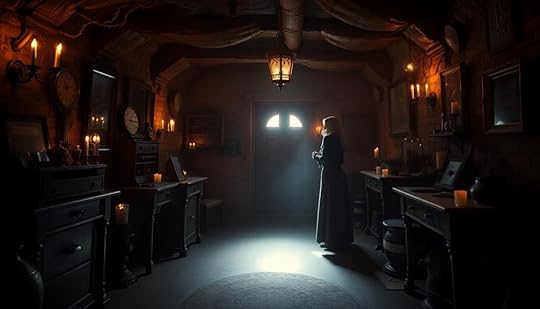
If you're looking for a truly unique night out, Aiden Sinclair's The Underground offers an unforgettable experience beneath The Stanley Hotel.
You'll witness interactive supernatural performances that blur the lines between reality and fantasy, all while enjoying Aiden's mesmerizing illusionist skills.
This ghostly entertainment is perfect for those seeking a thrilling blend of magic and the paranormal.
Interactive Supernatural PerformancesAiden Sinclair's The Underground consistently captivates audiences with its unique blend of interactive magic and supernatural storytelling. Nestled beneath The Stanley Hotel's Carriage House, this subterranean theater immerses you in an enchanting world filled with haunted history.
As you take your seat, prepare for an experience where the lines between reality and fantasy blur, making each performance truly unforgettable.
Engage with the performers during interactive magic shows that challenge your perceptions.Discover chilling local ghost stories woven into the narrative, enhancing the supernatural themes.Experience the eerie ambiance that only a haunted venue can provide, perfect for thrill-seekers.Designed for mature audiences, Sinclair's shows deliver an engaging atmosphere that keeps you on the edge of your seat. You won't just watch; you'll participate in séances and mind-bending illusions that resonate deeply with the rich folklore of Estes Park.
The Underground attracts paranormal enthusiasts, making it a must-visit for anyone seeking an eerie yet thrilling night out. Grab your tickets and prepare to explore an extraordinary blend of magic and haunting tales that only Aiden Sinclair can deliver.
Unique Ghostly Entertainment ExperienceStep into Aiden Sinclair's The Underground, where ghostly entertainment awaits beneath the historic Stanley Hotel. This subterranean theater offers a unique setting for supernatural-themed performances that blend reality with the paranormal.
You'll find yourself immersed in an atmosphere that heightens the thrill, making it an unforgettable experience for those who seek a touch of the eerie.
At The Underground, enjoy interactive magic shows and enchanting séances designed specifically for mature audiences. Aiden Sinclair, an accomplished illusionist, weaves local folklore and ghost stories into his performances, enhancing the supernatural ambiance that envelops the venue.
Each show is crafted to engage your senses, drawing you into a world where the lines between magic and the supernatural blur.
Tickets for various events are available, providing you with a chance to participate in this one-of-a-kind ghostly entertainment experience.
Whether you're a thrill-seeker or a fan of the paranormal, The Underground promises an exhilarating evening that will leave you with chills and whispers of the past.
Don't miss out on this unique adventure in Estes Park, where the spirits of the Rockies come alive through Aiden Sinclair's mesmerizing performances.
Aiden Sinclair's Illusionist SkillsThe enchanting atmosphere of Aiden Sinclair's The Underground showcases his remarkable illusionist skills, engaging audiences with a blend of magic and storytelling.
Located beneath The Stanley Hotel's Carriage House, this subterranean theater draws you into a world where fantasy and reality intertwine. Aiden Sinclair masterfully incorporates supernatural themes into his performances, creating an immersive experience that resonates with mature audiences.
Interactive magic shows that invite you to participate in the enchanting illusionsSÉANCES that explore ghostly narratives, allowing you to connect with the otherworldlyHistorical storytelling that weaves rich tales of the paranormal, enhancing the magicWith each show, Aiden Sinclair transforms the ordinary into the extraordinary, enthralling your imagination.
His unique approach to magic not only entertains but also leaves you pondering the mysteries of the supernatural.
Whether you're seeking thrills or a deeper connection to the hauntings of Estes Park, Aiden Sinclair's performances promise a distinctive blend of entertainment and ghostly intrigue.
Don't miss your chance to witness this enthralling experience at The Underground!
Historic Park Theatre Experiences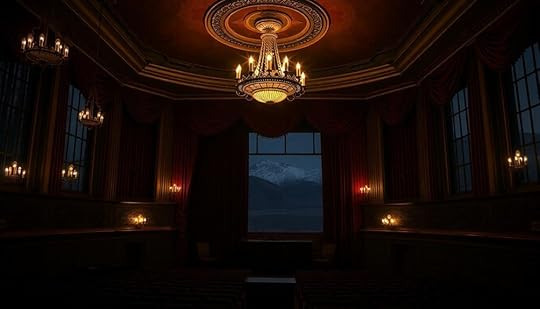
Estes Park's Historic Park Theatre offers a thrilling journey through both cinema and the supernatural. Built in 1913, it's the oldest operating cinema in the Western U.S., a representation of its rich history in the heart of Estes Park.
You'll love the theatre's iconic tower, which adds to its charm and character. Rumored to be haunted, the Historic Park Theatre draws in ghost enthusiasts keen to uncover its mysteries.
During the spooky season in Estes, the theatre comes alive with a lineup of spine-chilling films, live performances, and even ghost hunts. These themed events engage the community and create an electrifying atmosphere that you won't want to miss.
As you explore the theatre, you might hear whispers of its past, adding an element of intrigue to your experience. It serves as a hub for thrill-seekers and those fascinated by local ghost stories, making it a unique cultural venue.
Whether you're catching a classic movie or joining a ghost hunt, the Historic Park Theatre promises an unforgettable experience that blends entertainment with a touch of the supernatural.
Guided Walking Tours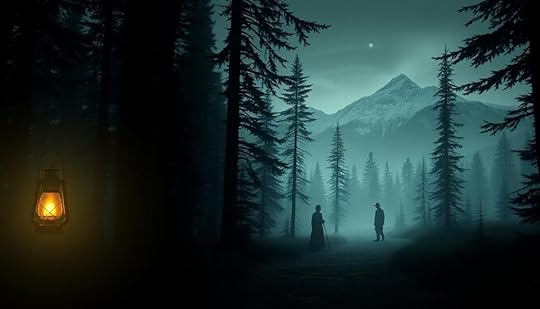
If you're looking for a unique way to experience Estes Park, guided walking tours are a must.
You'll uncover historical insights and ghostly encounters as you stroll through scenic routes, all while hearing enthralling tales from knowledgeable guides.
These tours not only showcase the town's eerie charm but also connect you with its rich haunted heritage.
Historical Insight and TalesDiscovering the haunted history of Estes Park through guided walking tours offers a fascinating blend of local folklore and rich heritage.
As you stroll through the town, you'll uncover ghost stories that intertwine with the historic buildings and charming storefronts, many of which are rumored to be haunted. You'll get to learn about the notable figures who shaped Estes Park, including the founders of the Seven Keys Lodge and the fascinating tale of the Stanley Hotel.
Here are a few highlights you can expect on your tour:
Eerie anecdotes about ghostly encounters that add an intriguing layer to the town's narrative.Historical insights into the development of Estes Park and its transformation into a haunted getaway.Visits to haunted sites where chilling tales of the past come alive, making each step feel like a journey through time.These walking tours provide a unique opportunity to engage with Estes Park's vibrant history while exploring its supernatural side.
Ghostly Encounters UnveiledAs you commence on a guided walking tour through Estes Park, you'll encounter ghostly encounters that breathe life into the town's haunted history. These tours offer a unique chance to explore charming buildings and investigate local legends that contribute to the eerie atmosphere.
Your tour guide will share spine-tingling tales of the Stanley Hotel, a significant haunted location known for its ghostly apparitions and unexplained phenomena.
You'll also visit the Historic Park Theatre, where whispers of the past linger in the air and stories of spectral sightings abound. Each stop reveals a rich tapestry of Estes Park's history, blending historical context with thrilling narratives that cater to both history enthusiasts and thrill-seekers alike.
Many of these walking tours take place in October, coinciding with the peak season for spooky events and heightened interest in local ghost stories.
As you stroll through the dimly lit streets, the chill in the air might just send shivers down your spine, making each moment even more exhilarating. Prepare yourself for an immersive experience filled with ghostly encounters you won't soon forget.
Scenic Routes ExploredExploration of Estes Park's scenic routes reveals an enchanting blend of natural beauty and historical significance. Guided walking tours offer a unique opportunity to dive deep into the town's rich history while soaking in the stunning landscapes surrounding you.
Stroll past charming buildings and storefronts that tell the story of Estes Park's founding.Hear spine-chilling ghost stories, especially those tied to the iconic Stanley Hotel, famous for its haunted reputation and connection to Stephen King.Enjoy breathtaking views as you navigate routes that lead into the nearby Rocky Mountain National Park.As you explore, knowledgeable guides share fascinating insights about the area's past, including significant events that shaped the community and its folklore.
Each step connects you more intimately with both the historical and paranormal heritage of Estes Park. Walking tours run throughout the year, making it easy for you to choose a time that suits your visit.
Thrilling Escape Room Adventures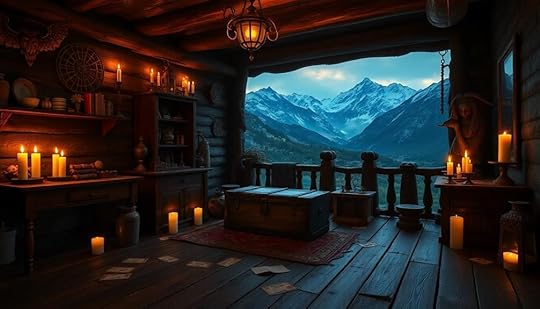
When you step into one of Estes Park's thrilling escape rooms, you're instantly immersed in a world of suspense and mystery.
These escape rooms challenge you to solve intricate puzzles and uncover hidden clues, all set against a spooky backdrop. Each room boasts a unique paranormal theme, drawing inspiration from local ghost stories and folklore that heighten the atmosphere.
As you gather your friends or family, you'll find that these adventures are perfect for teamwork, encouraging everyone to collaborate and think critically. The clock ticks down, adding a sense of urgency that makes every moment exhilarating.
You'll race against time, trying to complete your mission before the final seconds slip away.
Whether you're a local or a visitor, the popularity of these escape rooms has surged, reflecting a growing interest in ghostly adventures in the area.
The blend of thrill and chills makes for an unforgettable experience, leaving you with stories to share long after you've escaped.
Spooky Film Screenings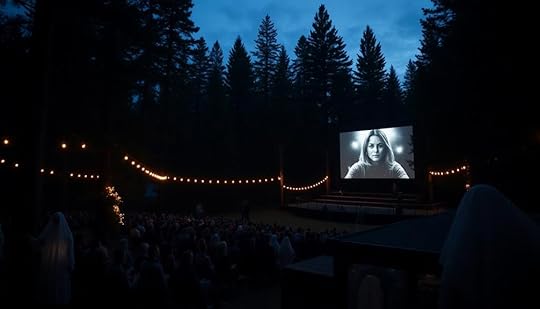
If you love a good scare, Estes Park's spooky film screenings are a must-see during the Halloween season. Each October, the historic Park Theatre, built in 1913, transforms into a hub of thrilling cinematic experiences. Classic horror movies fill the screen, creating a chilling atmosphere that complements the haunting charm of the surrounding Rockies.
Here's what you can expect from these Halloween events:
Eerie Ambiance: The vintage setting of the Park Theatre adds to the suspense, making every film feel even more immersive.Community Vibe: Locals and tourists alike gather, fostering a sense of shared excitement and engagement in the spirit of Halloween.Diverse Film Selection: From timeless classics to modern fright fests, there's something for every horror enthusiast.As you settle into your seat, the flickering images will pull you into a world of thrills and chills.
Whether you're a lifelong horror fan or just looking for a fun way to embrace the season, these spooky films in Estes Park promise an unforgettable experience.
Don't miss out on this unique blend of cinema and community during Halloween!
Candy Shop Delights
As you stroll through Estes Park during Halloween, the enticing aroma of freshly made sweets beckons you to its charming candy shops. October is the peak season for these delightful destinations, and you'll find a variety of treats perfect for your spooky celebrations.
Make sure to stop by Laura's Fine Candies, where you can indulge in their homemade fudge and caramel apples, the ideal combination of flavors to satisfy your sweet tooth.
If you're in the mood for something chewy, head over to The Taffy Shop, renowned for its fresh taffy featuring unique flavors that will surprise and delight you.
Don't miss the Estes Park Sugar Shack, a true candy lover's paradise. Here, you can explore an extensive selection of chocolates, candies, and confections designed to fulfill every craving.
One local favorite is the Rocky Mountain saltwater taffy, a delicious treat that showcases the region's specialty in sugary delights.
These candy shops not only offer tasty indulgences but also enhance the festive atmosphere of Estes Park, making them essential stops during your Halloween adventures.
Frequently Asked QuestionsWhat Happened in Room 217 at the Stanley Hotel?In Room 217, a gas explosion injured head housekeeper Elizabeth Wilson in 1911. You'll likely experience eerie phenomena, like flickering lights and moving objects, as her caring presence lingers, attracting ghost enthusiasts and curious visitors alike.
How Many People Have Died at the Stanley Hotel in Colorado?While specific records aren't available, many believe several deaths have occurred at the Stanley Hotel since 1909. You might find the haunting stories, especially of Elizabeth Wilson in Room 217, quite enchanting.
Why Is the Stanley Hotel Scary?The Stanley Hotel's scary because of its chilling history, unsettling ghost stories, and reported supernatural occurrences. You'll encounter shadowy figures, unexplained laughter, and cold spots, making each visit a spine-tingling experience you won't forget.
What Horror Movie Was Filmed in Estes Park?You might say a certain film delicately dances with the supernatural; "The Shining" was filmed in Estes Park, showcasing the Stanley Hotel's haunting beauty, enchanting horror fans and leaving an indelible mark on cinematic history.
ConclusionSo, while you might think Estes Park is just another picturesque mountain town, it's actually a thrilling haunt for those seeking chills and thrills. You'll find yourself enchanted by the serene beauty, only to be spooked by the ghosts of the past lurking around every corner. Who knew that a getaway meant to relax could lead to encounters with the eerie and unexplained? Embrace the irony—your perfect escape might just become your most haunting adventure yet.
November 22, 2024
What if Monsters Have Complex and Unique Family Structures
Monsters might have family structures just as intricate as ours. Imagine Sasquatch nurturing their young in close-knit groups, teaching them survival skills and fostering bonds through play. These creatures form nests and engage in protective behaviors, showcasing both intelligence and social organization. Dominant males lead their families, while females focus on nurturing. Their territorial instincts are strong, with family members working cohesively to protect their young. This unique blend of parenting styles and social hierarchies profoundly impacts their ecosystems. Curious about the deeper connections monsters share? You'll find fascinating insights waiting for you.
Key TakeawaysMonster families, like Sasquatch, exhibit complex social structures with dominant males, nurturing females, and cooperative parenting dynamics.Nest construction by monsters indicates advanced cognitive abilities and reflects deep familial bonds and social organization within their groups.Territorial defense strategies demonstrate the importance of protecting young, emphasizing the collective efforts of family members in ensuring safety.Observational behaviors, such as play and teaching survival skills, highlight the nurturing roles of monster parents, reinforcing strong family connections.Cultural narratives and media representations shape perceptions of monster family structures, emphasizing their societal significance and ecological roles.Cultural Context of Monster Families
In many Indigenous narratives across North America, monster families, particularly those of Sasquatch, play a significant role in cultural storytelling. These narratives emphasize the family unit, showing Sasquatch as not just solitary beings but as part of complex social structures. The Salish people, for instance, refer to Sasquatch as Tsemekwes, highlighting the importance of familial ties in their lore.
You'll find that Sasquatch families typically consist of a dominant male, adult females, and their young. The adult females are essential, nurturing their offspring and teaching them fundamental survival skills. Observational studies suggest these family units create intricately woven nests, showcasing their advanced cognitive abilities.
These nests are often clustered together, indicating strong familial bonds during sleep. Additionally, Sasquatch families demonstrate territorial behaviors, marking boundaries and defending against intruders. This protective instinct reinforces the importance of social cohesion within the family unit.
Observational Insights on Family Dynamics
Observational insights reveal fascinating details about the family dynamics of Sasquatch, enriching our understanding of these creatures beyond their mythical status.
Research indicates that Bigfoot families typically consist of a dominant male, several adult females, and their offspring, showcasing a social structure reminiscent of large primates. You might find it intriguing that females play a significant role in nurturing and educating young Sasquatches, imparting essential survival skills and foraging techniques.
Juvenile Sasquatches engage in play behaviors similar to those of primates, including mock wrestling and chasing games, which are fundamental for their social development. This playful interaction isn't just fun; it builds bonds within the family unit.
Additionally, the discovery of large nests made from interwoven sticks and branches suggests that Bigfoot families sleep closely together, indicating strong familial bonds.
Communication within Sasquatch families involves both vocalizations and gestures, highlighting their intelligence and social awareness.
These insights illustrate that Sasquatch families are complex and nurturing, allowing for a deeper appreciation of their relationships and social structures in the wild.
Parenting Styles Among Monsters
When you look at monster families, you'll notice nurturing behaviors play an essential role in their parenting styles.
These monsters often teach their young crucial survival skills, ensuring they're equipped to thrive in their environments.
Nurturing Behaviors ObservedNurturing behaviors among monsters, particularly in Sasquatch families, reveal fascinating insights into their parenting styles. Observational studies show that Sasquatch mothers actively engage with their young, teaching them essential survival skills and foraging techniques.
These nurturing behaviors create a foundation for social learning, as juvenile Sasquatches participate in play that mirrors primate interactions, such as mock wrestling and chasing games. This structured approach to play not only fosters physical development but also strengthens social bonds among siblings.
Additionally, the construction of large, interwoven nests showcases their advanced cognitive abilities and reflects the care Sasquatch families dedicate to their offspring's safety and comfort.
Female Sasquatch adults play an essential role in nurturing, ensuring their young grow up in a supportive environment. By emphasizing nurturing behaviors, Sasquatches reinforce strong familial ties, much like human parenting dynamics.
The commitment to their young's well-being highlights the importance of nurturing in their social structures, creating an intricate web of care and education. As you explore these unique family dynamics, it becomes clear that monsters like Sasquatch possess rich and complex nurturing behaviors that deserve recognition and understanding.
Teaching Survival SkillsIn many Sasquatch families, the emphasis on teaching survival skills is strikingly evident. Sasquatch mothers take an active role in educating their young, passing down essential foraging techniques and navigation skills needed to thrive in challenging terrains. This hands-on approach mirrors advanced parenting behaviors seen in primate social structures, showcasing their cognitive capabilities.
Additionally, the nurturing aspect of caregiving is important, as it equips young Sasquatches with the emotional resilience needed for their environment, much like the support resources available for families managing care for elderly relatives in the Caregiver Support Network.
Young Sasquatches engage in play behaviors that resemble mock wrestling and chasing games, which aren't just for fun; they foster significant social and survival skills. These playful interactions help them learn how to cooperate and defend themselves, preparing them for the challenges of their environment.
The construction of large, circular nests indicates that Sasquatch families invest time in creating safe spaces for their offspring. This attention to safety reflects their strong territorial behaviors, emphasizing the importance of protecting their young from perceived threats.
Even when comparing to legends like Frankenstein's Monster, you can see how nurturing and survival skills are essential in monster family dynamics. In the end, Sasquatch parenting highlights a deep commitment to ensuring their young are equipped with the tools necessary for survival in the wilderness.
Shelter and Nesting Habits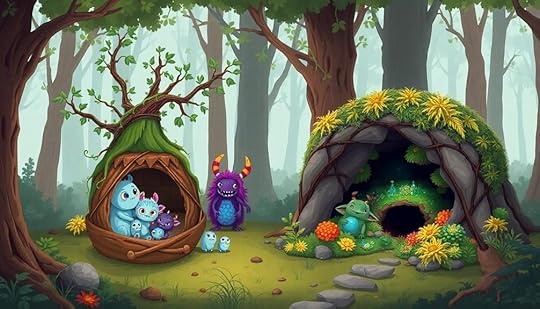
Although many creatures rely on instinct for shelter, Bigfoot demonstrates a remarkable level of intelligence in its nesting habits. These elusive beings create intricate nests in remote wilderness areas, showcasing their advanced cognitive abilities. Typically measuring 8-10 feet long, their nests are crafted from interwoven sticks and branches, indicating a thoughtful approach to shelter construction.
Here are some fascinating aspects of Bigfoot's shelter and nesting habits:
Nests often found in clusters, suggesting close family ties.Consistent designs across regions hint at cultural practices.Circular or oval-shaped nests highlight their planning skills.Nesting behaviors may impact local ecosystems, affecting prey populations.Bigfoot families sleep in proximity, reinforcing social bonds within their family home. The advanced nesting practices not only reveal their intelligence but also emphasize the importance of community and connection among these creatures.
Observational studies suggest that their unique approach to shelter plays a crucial ecological role, potentially influencing the environment in which they thrive. By understanding their nesting habits, we gain insight into the complex social structures that define Bigfoot families.
Territorial Behavior and Protection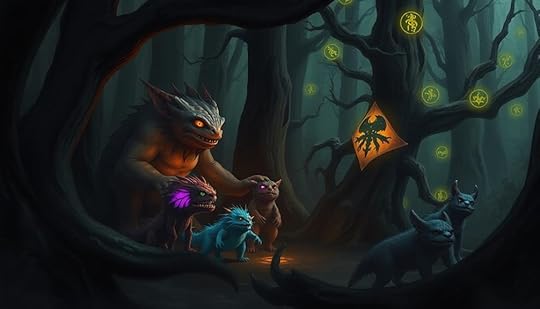
When you observe Bigfoot families, you'll quickly notice their strong territorial instincts.
They mark boundaries with distinctive signs and actively defend their claimed areas, ensuring the safety of their young.
This behavior highlights their effective communication and collaboration in protecting their territory from intruders.
Family Territory Defense StrategiesTerritorial defense strategies among Bigfoot families are fascinating and complex. These majestic creatures demonstrate a strong commitment to their territory, particularly when it comes to protecting their young. Observations reveal that both the dominant male and the female monster play essential roles in safeguarding their family unit.
Here are some key aspects of their defense strategies:
Vocalizations: Bigfoot families use distinct calls to signal their presence and deter intruders.Physical Markers: Tree breaks and ground scrapes act as territorial indicators, reinforcing their claim over an area.Aggressive Responses: Family groups show remarkable aggression when they perceive threats, especially towards their offspring.Social Cohesion: Strong family bonds enhance their collective defense, ensuring the stability of their territory.The dominant male often leads the charge in defending their space, but the nurturing instincts of the female monster are equally vital. Together, they create a formidable front, ensuring their young remain safe while reinforcing the family's territorial integrity.
This dynamic illustrates how intricate and protective family structures can be, even in the domain of mythical beings.
Marking Boundaries and CommunicationIn the domain of Bigfoot families, marking boundaries and communicating effectively are essential for maintaining their territory and ensuring their young's safety.
These creatures that live in dense forests exhibit strong territorial behaviors, using vocalizations and physical markings like tree breaks and ground scrapes to establish and defend their claimed areas.
When you observe their interactions, you'll notice that these markings serve dual purposes: claiming space and signaling presence to other Sasquatch families or potential intruders.
Family groups respond aggressively to perceived threats, showcasing a protective instinct that reinforces social bonds and the safety of their offspring.
The dominant male often assumes the protector role, prioritizing the defense of the territory against any intruders.
In territorial disputes, you might see displays of strength and vocalizations rather than physical confrontations, indicating a complex social structure.
Ecological Roles of Monster Families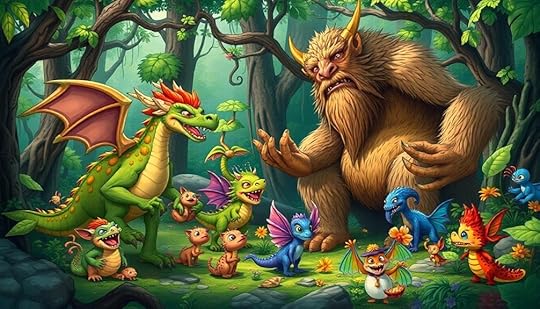
Monster families play an essential role in their ecosystems, influencing both plant and animal populations. These creatures, like those in Bigfoot lore, demonstrate complex behaviors that enhance their habitats. Here are some key ecological contributions of monster families:
Foraging and Nesting: Their foraging habits can help maintain forest health, as they contribute to plant dispersal while nesting in strategic locations.Social Dynamics: Observational studies show structured social hierarchies, where dominant males lead and females nurture young, ensuring survival and adaptation.Territorial Behavior: By marking boundaries and defending their territories, monster families protect their young and maintain social cohesion, which is crucial for lineage continuity.Cultural Practices: The craftsmanship displayed in nest construction suggests knowledge transfer among family groups, indicating a sophisticated understanding of their environment.These behaviors not only support their survival but also help regulate prey populations, contributing to a balanced ecosystem.
Understanding the ecological roles of monster families reveals how these often-misunderstood beings intertwine with the natural world, showcasing their significance beyond folklore.
The Influence of Media and Culture
Media and culture shape our understanding of monsters and their family structures in profound ways. Films like "Bigfoot Family" portray these creatures not as solitary beings but as social entities with nurturing family units. This reflects the cultural significance of community bonds and challenges traditional social norms surrounding family dynamics.
Indigenous stories, particularly from the Salish people, further emphasize the importance of family, presenting creatures like Sasquatch as integral parts of familial narratives.
Observational studies suggest that Bigfoot exhibits complex social behaviors, such as nurturing mothers educating their offspring. This portrayal not only highlights themes of parenthood and survival but also reinforces the idea that even monsters have familial roles.
The construction of nests by Bigfoot symbolizes social organization, which enhances cultural perceptions of these creatures, making them more relatable and approachable.
As documentaries emerge, they contribute to a broader understanding of monsters' ecological roles and societal implications. This growing awareness influences how monsters are represented in popular culture, reshaping our perceptions and expectations.
Ultimately, media plays an essential role in redefining social norms surrounding family structures, even for beings once considered purely mythical.
ConclusionIn exploring the rich tapestry of monster families, you uncover that these creatures often mirror our own complexities. Did you know that 72% of fictional monsters are depicted as having nurturing roles, challenging our perceptions of them as mere threats? By understanding their diverse family structures and dynamics, you not only appreciate the creativity behind these characters but also reflect on the broader themes of love and protection that resonate across all species.
Bannack’s Dark Past: Explore the Creepiest Ghost Town in Montana
Bannack, Montana, is a ghost town steeped in dark history that'll captivate and chill you. Founded during the gold rush, it quickly became notorious after Sheriff Henry Plummer's criminal reign. As you wander its preserved buildings, like the haunted Hotel Meade and the eerie Bessette House, you might encounter the restless spirits that locals whisper about. The peaceful atmosphere only adds to the town's unsettling allure, perfect for exploration. You'll want to stay a while to soak in its haunted legends and intriguing stories that linger in the air. There's so much more to uncover about Bannack's spooky past.
Key TakeawaysBannack was founded in 1862 during a gold rush, leading to a tumultuous history marked by crime and vigilantism.The notorious Sheriff Henry Plummer was executed by a vigilance committee, contributing to the town's dark legacy.The Hotel Meade is considered the most haunted building, with reports of cold spots and sightings of an older woman.Ghostly encounters are common in Chrismans General Store, where visitors have experienced shadow figures and disembodied voices.Over 60 preserved buildings create a haunting atmosphere, inviting exploration of Bannack's eerie and rich history.History of BannackNestled in the rugged landscape of Montana, Bannack was founded in 1862 after gold was discovered in Grasshopper Creek. This boomtown quickly attracted thousands of prospectors, peaking at a population of 3,000 to 5,000 by 1863.
Named after the local Bannock Native Americans, Bannack briefly served as the capital of the Montana Territory, showcasing its importance in the gold mining era.
However, the town's history took a dark turn with the election of Sheriff Henry Plummer in 1863. Plummer, who was supposed to uphold the law, was involved in criminal activities and led a notorious gang known as the Innocents. His reign of terror prompted the formation of a Vigilance Committee, which ultimately executed him in 1864, marking a pivotal moment in Bannack's turbulent past.
As mining opportunities dwindled, so did Bannack's population, leaving only a few hundred residents by the 1930s. The last resident departed in 1953, and the town was sold to preserve its rich history.
Today, Bannack State Park stands as a symbol to this ghost town's intriguing legacy, inviting visitors to explore its haunting past.
Notable Structures and Sites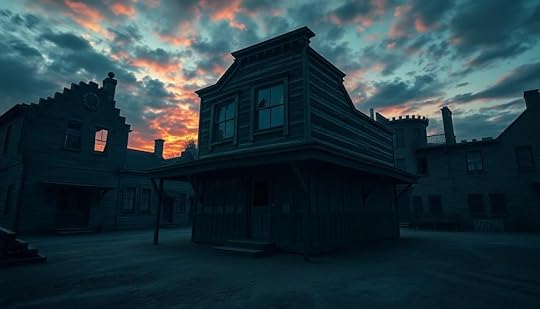
Bannack's notable structures and sites offer a glimpse into its storied past, showcasing the town's vibrant history and the lives of its residents.
As you wander through Bannack Ghost Town, you can't miss the Bannack Jail, the first jail in Montana. Built during Sheriff William Henry Plummer's tenure, it features three cells, one a mere 12 square feet, reflecting the harsh conditions of the 1860s.
Next, visit the Hotel Meade, originally the courthouse, which became a hotel in 1890. Its winding staircase and historical architecture highlight its role as a social hub.
Don't forget the Assay Office, one of the oldest buildings, where miners had their gold assessed, achieving an impressive purity of 99%.
You'll also find the Schoolhouse, a landmark of the community's educational history, and the remnants of various saloons and a brewery, which served as crucial gathering spots during the mining town's heyday.
Each of these structures tells a story, and if you're lucky, you might even join one of the ghost walks that explore deeper into Bannack's fascinating past.
Paranormal Activity and Legends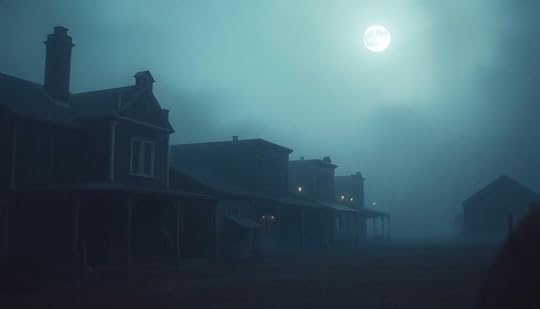
Visitors often find themselves captivated by the eerie atmosphere that envelops Bannack, a place steeped in tales of the supernatural. The ghost of a teenage girl named Dorothy Dunn is often spotted near Grasshopper Creek pond, where she tragically drowned in 1916. This haunting legend is just one of many that permeate the town.
Hotel Meade, recognized as the most haunted building in Bannack, is notorious for its cold spots and sightings of an unknown older woman peering from the windows. Those who dare to enter often report unsettling paranormal activity.
Similarly, Chrismans General Store serves as a hotspot for ghostly encounters, where visitors describe shadow figures and disembodied voices, potentially linked to the infamous Plummer gang.
The Bessette House, once a quarantine station for sick children, carries its own chilling tales, with reports of child spirits and eerie sounds echoing the tragic history of lost lives.
Throughout Bannack, the air is thick with legends and unsettling encounters, drawing you into a world where the past lingers, waiting to be discovered.
Visitor Experience and Atmosphere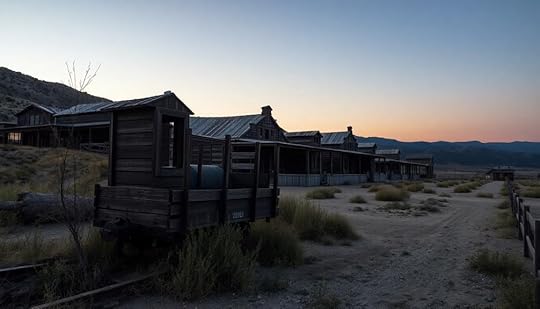
While exploring Bannack, you'll find yourself immersed in a striking historical atmosphere that feels like a step back in time. This ghost town, with over 60 preserved buildings from the 1860s, offers a seamless historical experience that transports you to the Wild West era.
The aging structures create a beautiful, nostalgic, and slightly eerie ambiance, enhancing your exploration of Bannack's rich past. You'll likely find that the absence of crowds allows for a peaceful visit, enabling you to connect intimately with the surroundings.
Plan to spend nearly two hours wandering the town, discovering its significant landmarks that harken back to the gold rush days. Don't forget to stop by the visitor center, where you can grab a $2 guidebook that provides valuable insights into the history of the buildings in Bannack.
Even without definitive evidence of ghosts, the site sparks your imagination, inviting you to ponder the lives once lived here. Bannack serves as an intriguing destination for anyone interested in both history and the supernatural, making your visit a memorable adventure.
Travel Information and Tips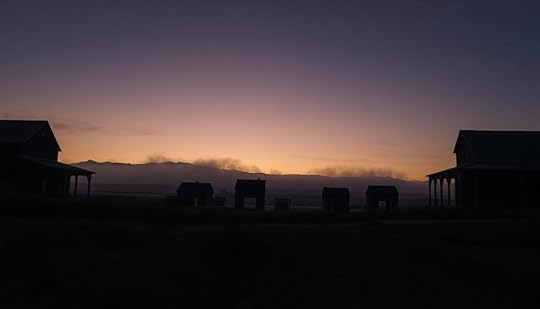
Exploring Bannack isn't just about the haunting atmosphere; it's also about planning your visit effectively. Located about a 30-minute drive from Dillon, Montana, Bannack State Park is easily accessible from major cities like Bozeman, Helena, and Missoula.
You can immerse yourself in the historical charm of this ghost town in just two hours, and don't forget to grab a $2 guidebook at the visitor center for added context about its gold mining past.
For outdoor enthusiasts, the park features several campgrounds ideal for RVs and tents, allowing you to enjoy both nature and history. If you prefer a more comfortable stay, nearby hotels can be booked through platforms like Booking.com.
To make the most of your trip, check out Bannack.org for travel tips and further information about this fascinating ghost town.
Whether you're wandering through the remnants of the mining era or contemplating the stories behind the old buildings, Bannack offers a unique glimpse into Montana's historical landscape. Prepare for an unforgettable journey into the shadows of the past!
Frequently Asked QuestionsWhat Is the Scariest Ghost Town in Montana?If you're looking for the scariest ghost town in Montana, Bannack's your best bet. With its haunted buildings, chilling stories, and eerie atmosphere, you'll experience a spine-tingling adventure that'll stay with you long after visiting.
Do People Still Live in Bannack, Montana?No, people don't live in Bannack, Montana. It's a ghost town preserved as a state park. You can explore its historical buildings, but only seasonal staff and volunteers maintain the site for visitors.
Is Bannack Ghost Town Haunted?Yes, Bannack Ghost Town's haunted reputation isn't just talk. You'll hear unsettling sounds, feel cold spots, and possibly see shadowy figures. Visitors often experience eerie encounters, making it a must-visit for paranormal enthusiasts like you.
What Happened in Bannack, Montana?In Bannack, you'll find vibrant history clashing with eerie silence. Founded during a gold rush, it flourished before lawlessness and disaster led to its decline, leaving behind haunting remnants of a once-thriving mining town.
ConclusionBannack's dark past invites you to uncover its mysteries, explore its haunting beauty, and embrace its eerie charm. As you wander through the ghost town, you'll feel the whispers of history, sense the thrill of the unknown, and connect with the spirits of those who once thrived here. Whether you're drawn by the legends, the landscapes, or the adventure, Bannack promises an unforgettable experience that lingers long after you leave its shadowy streets.



